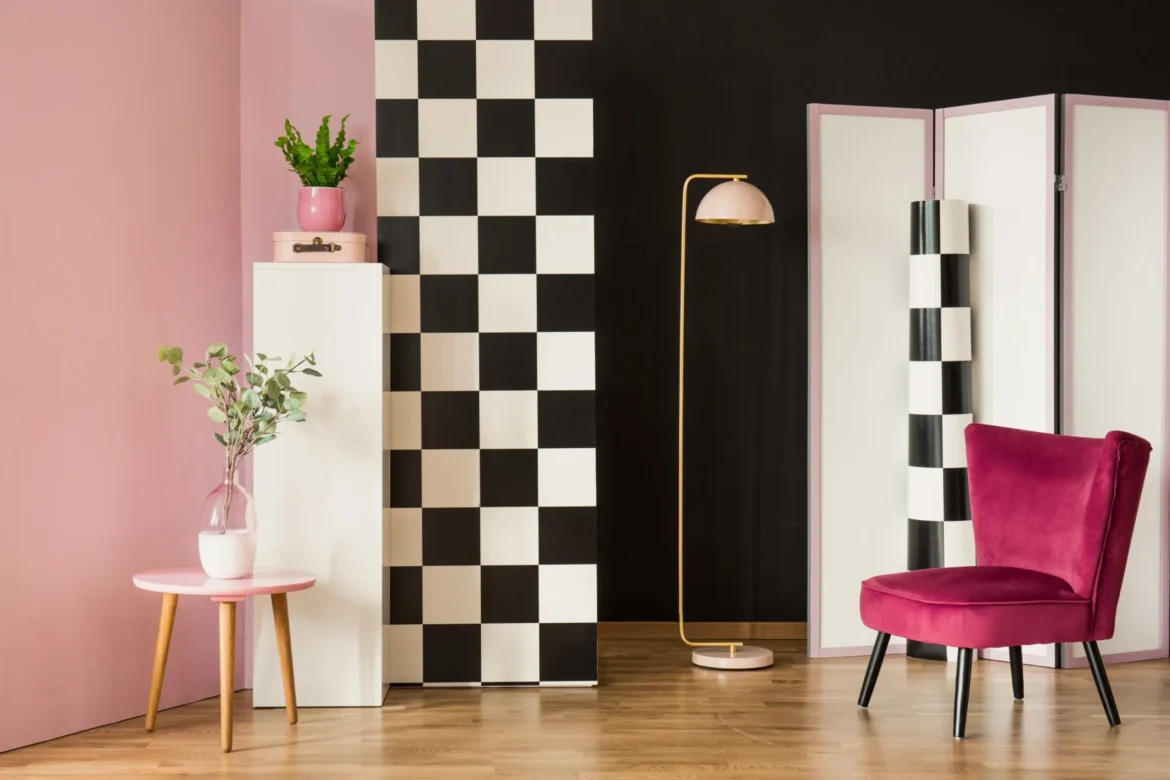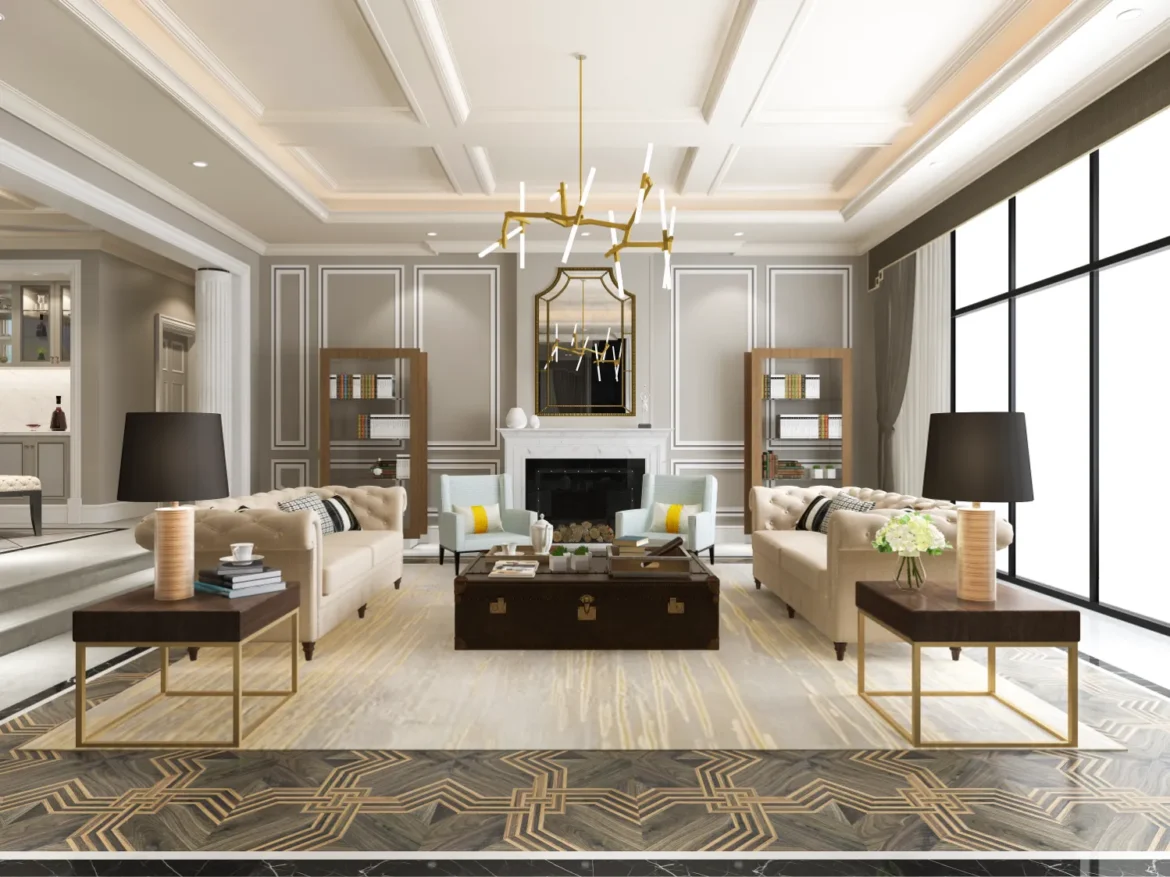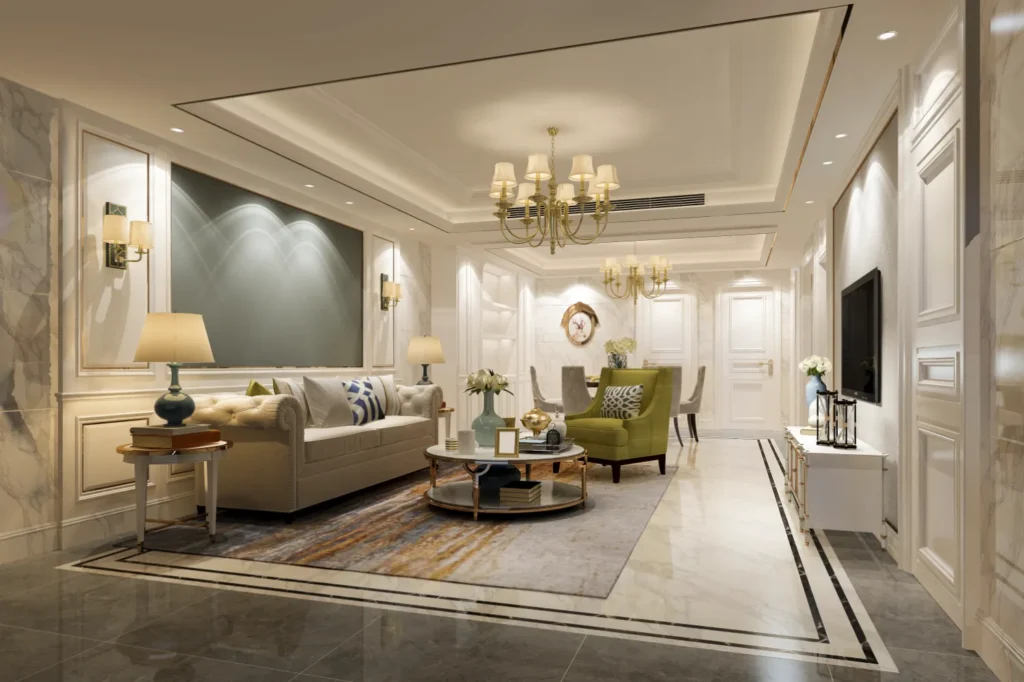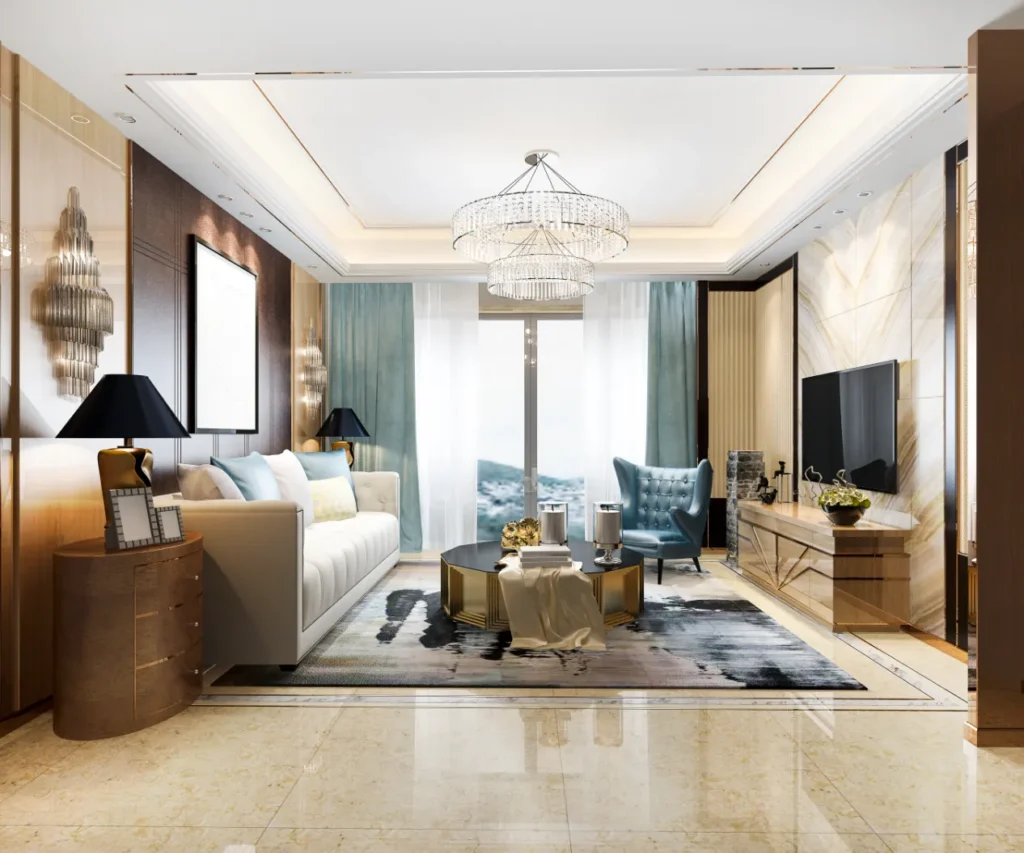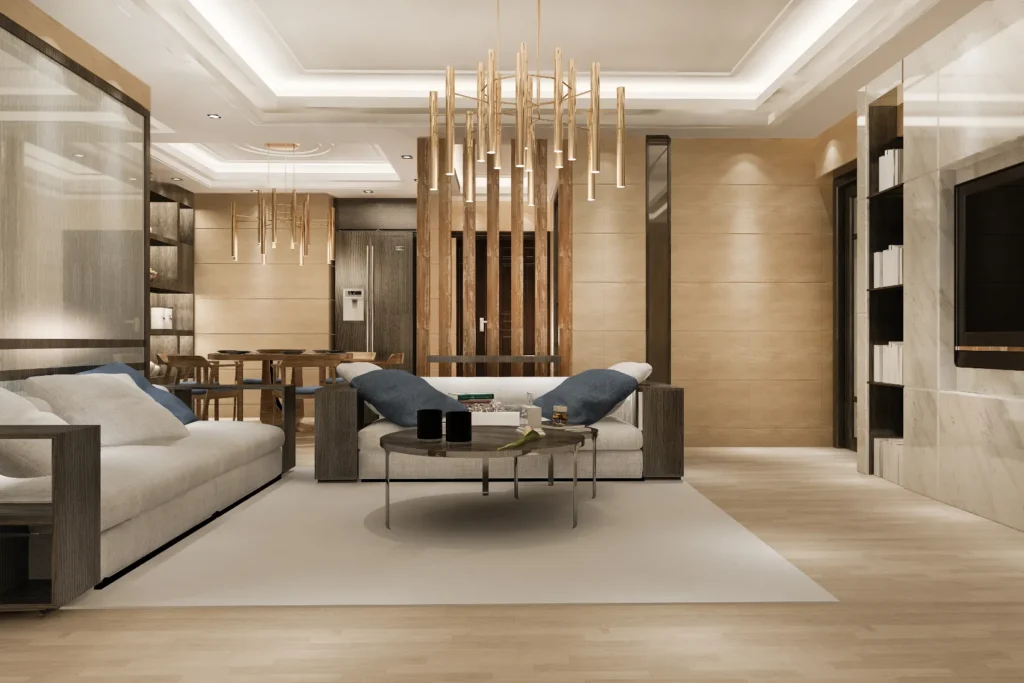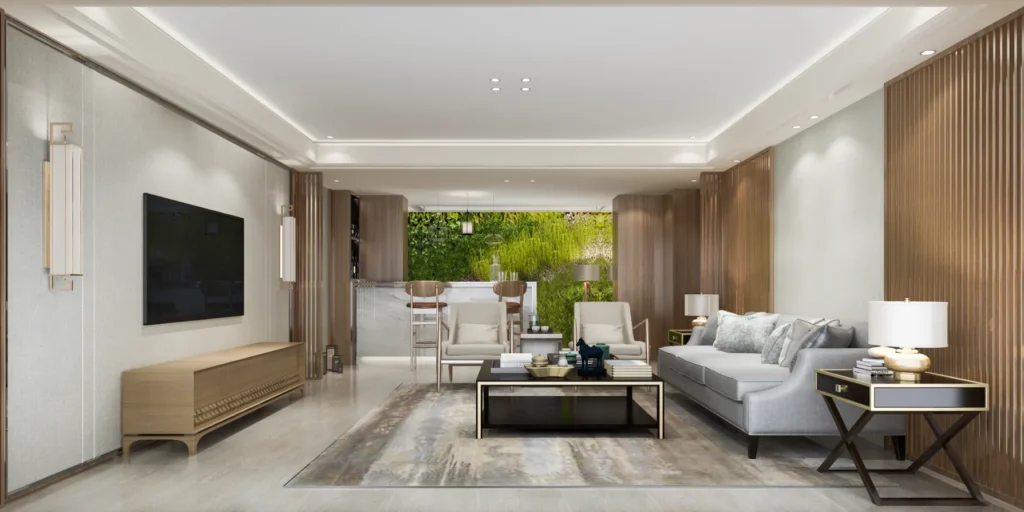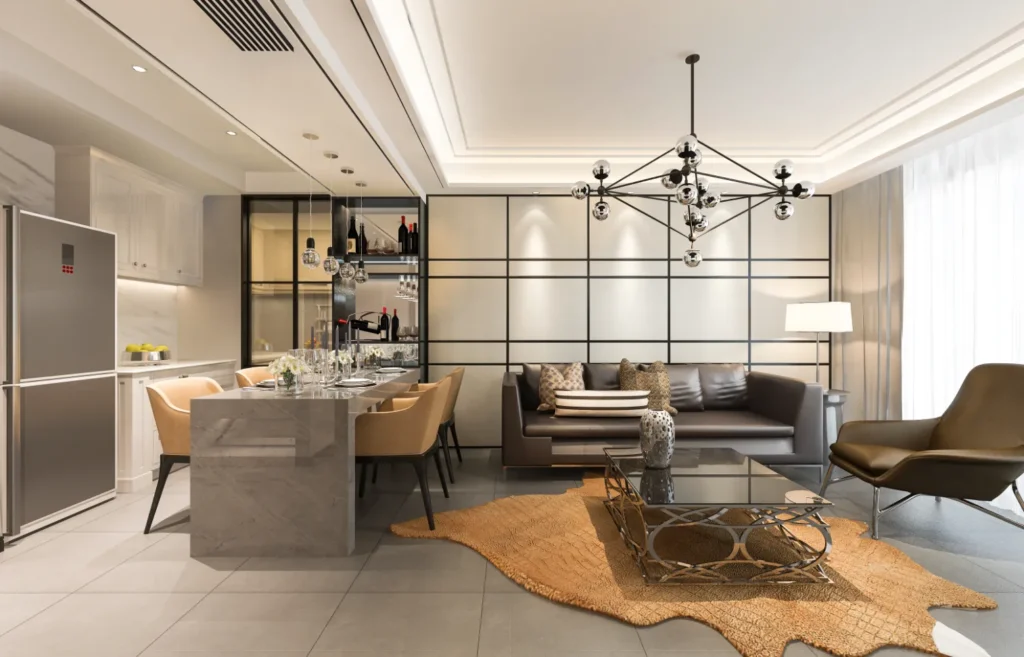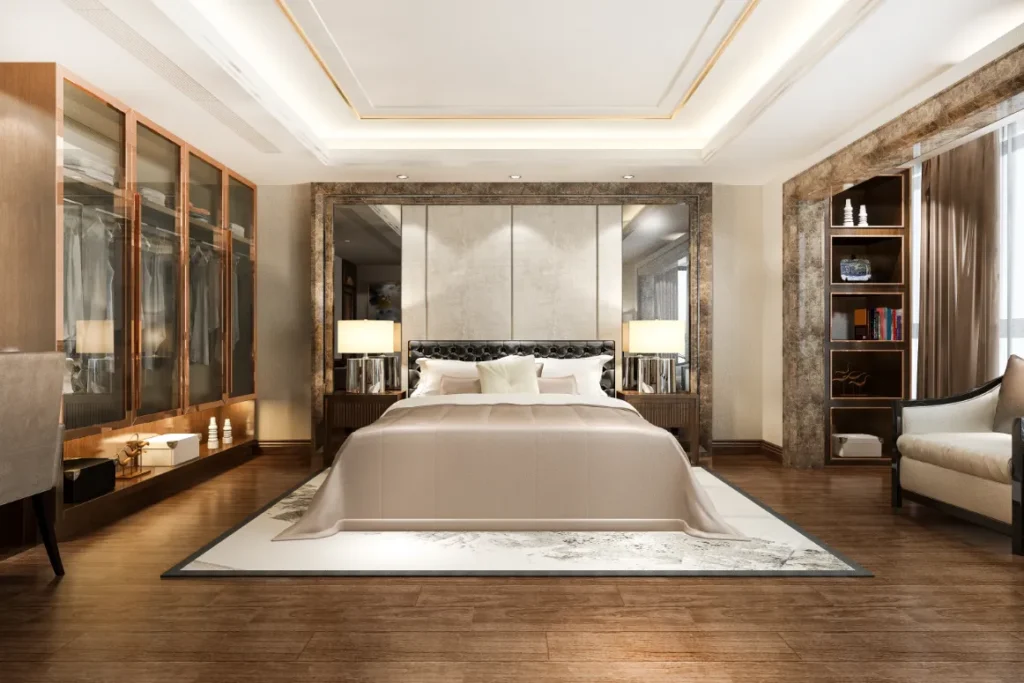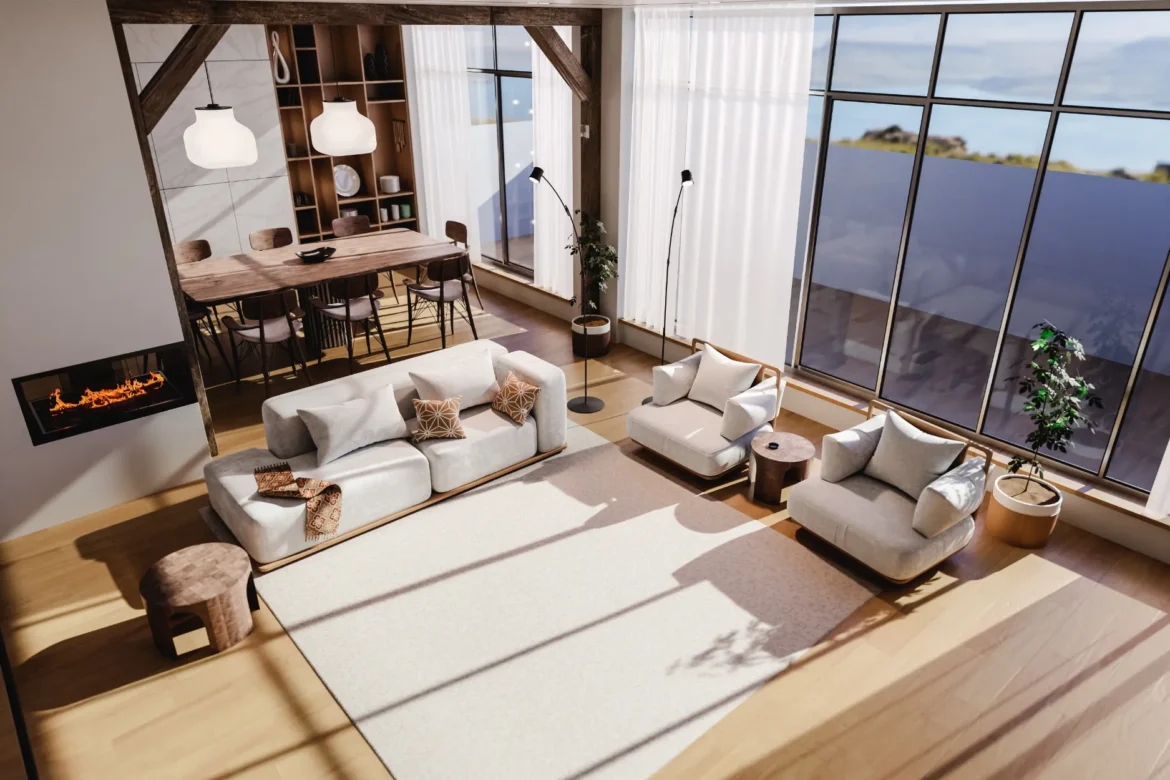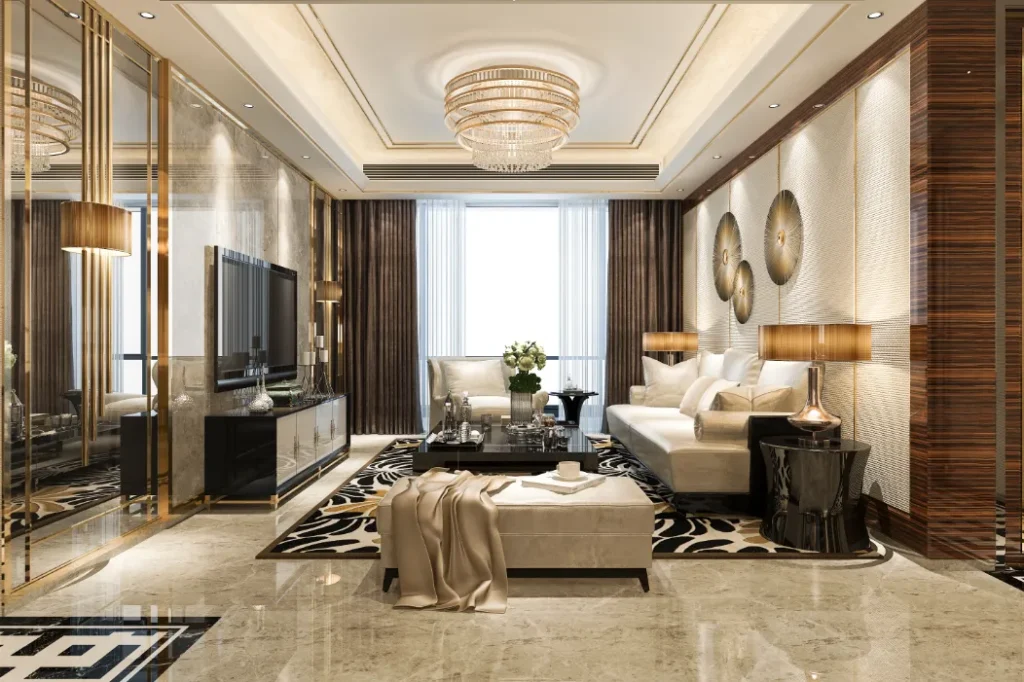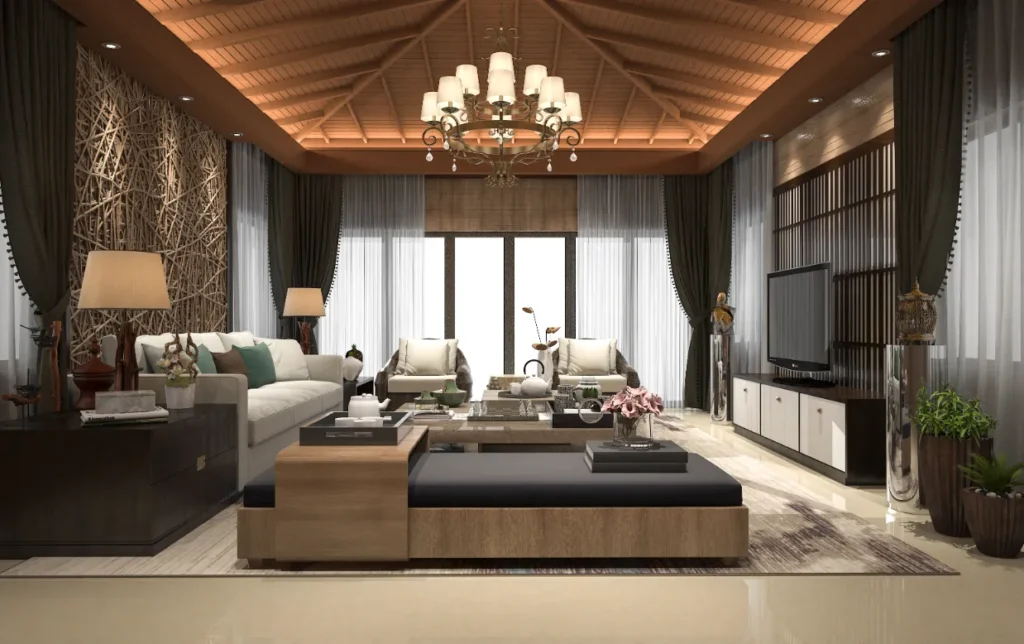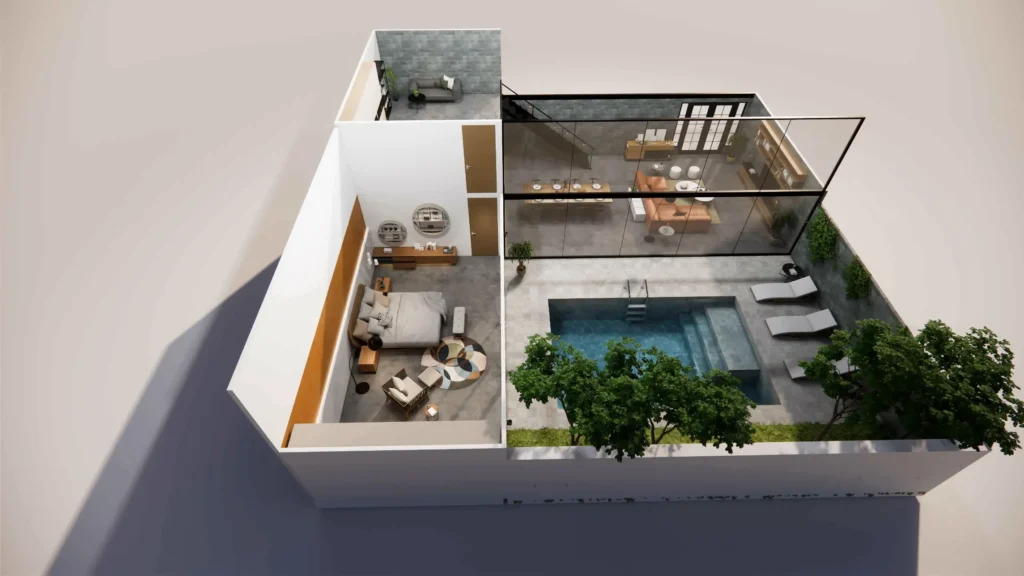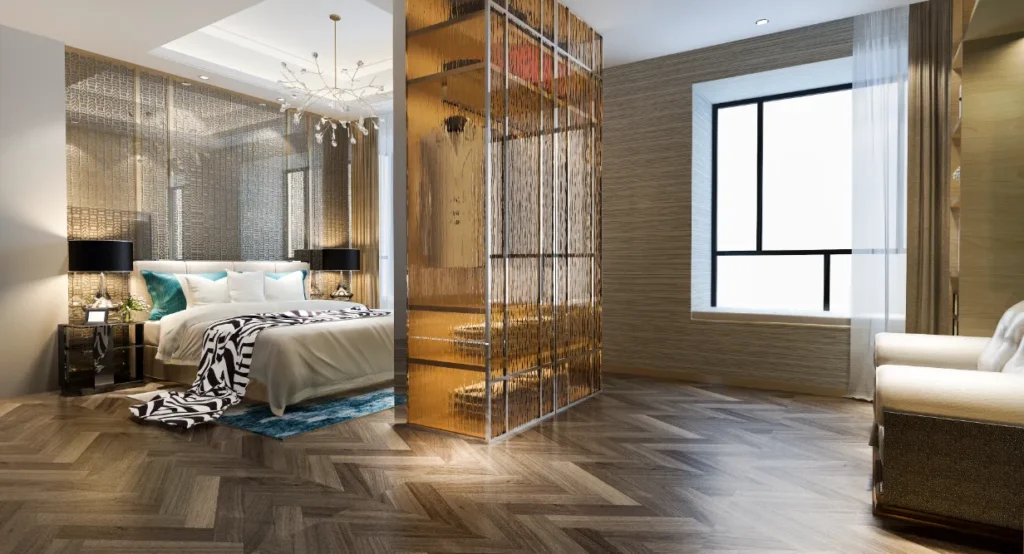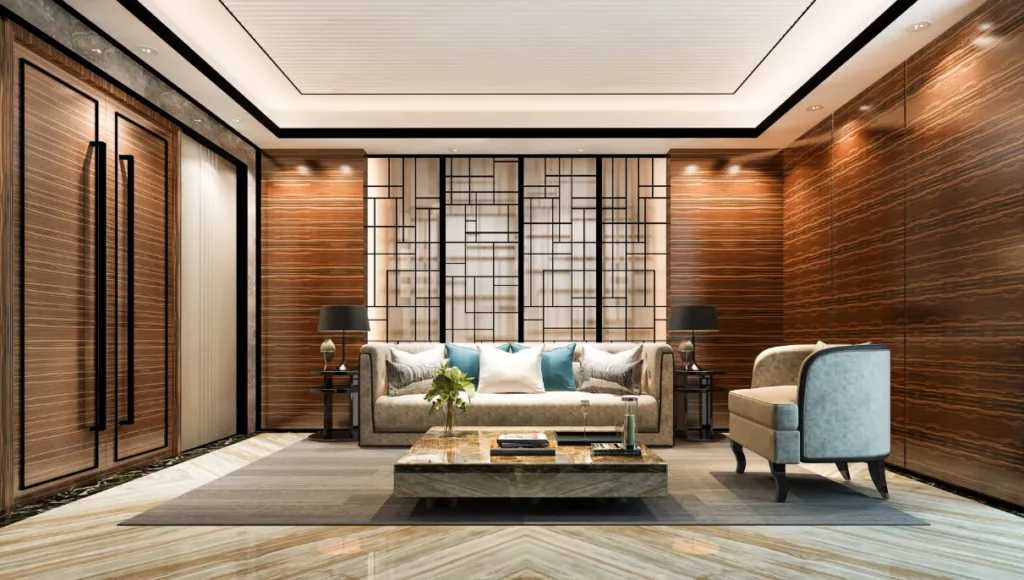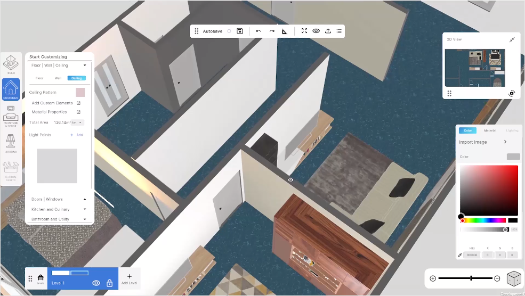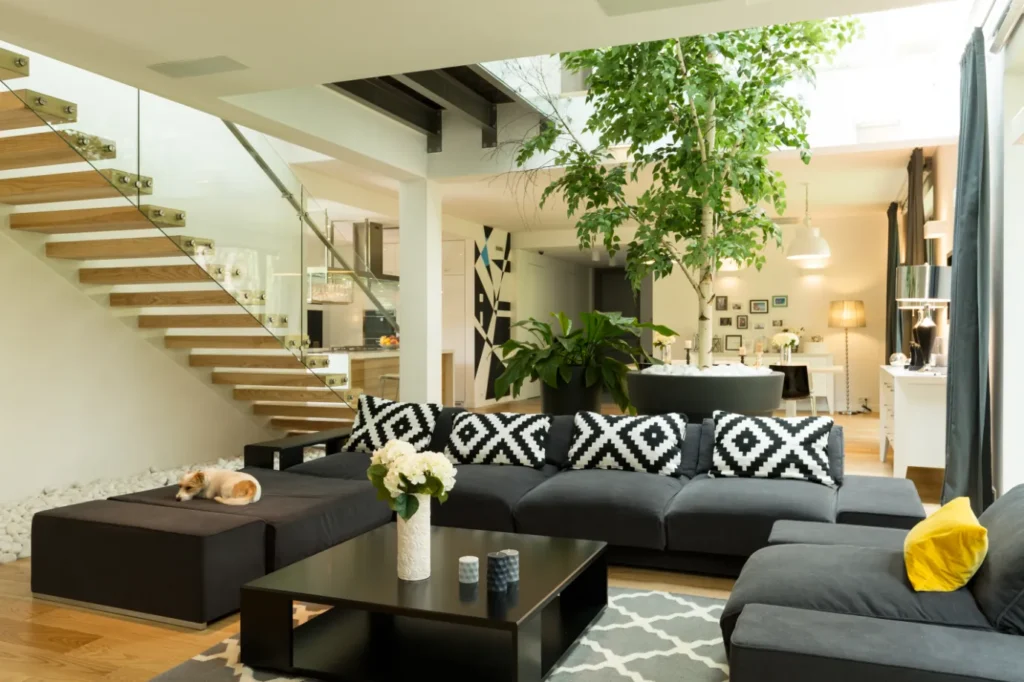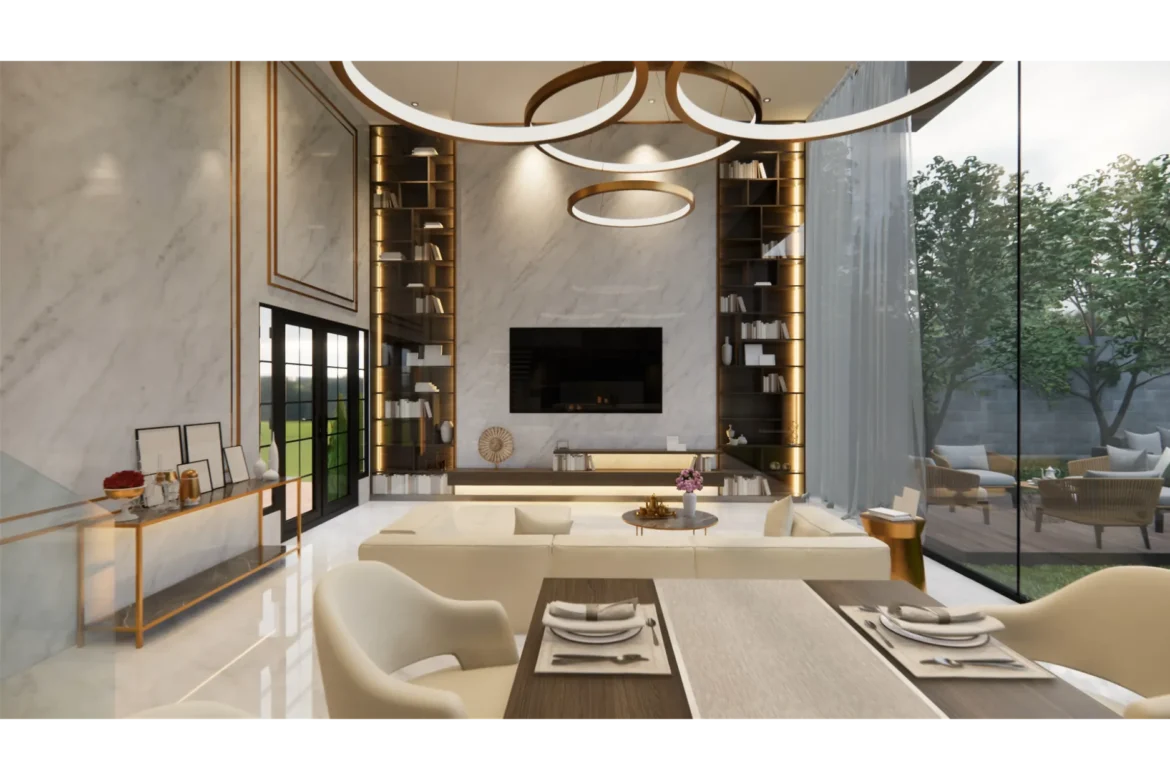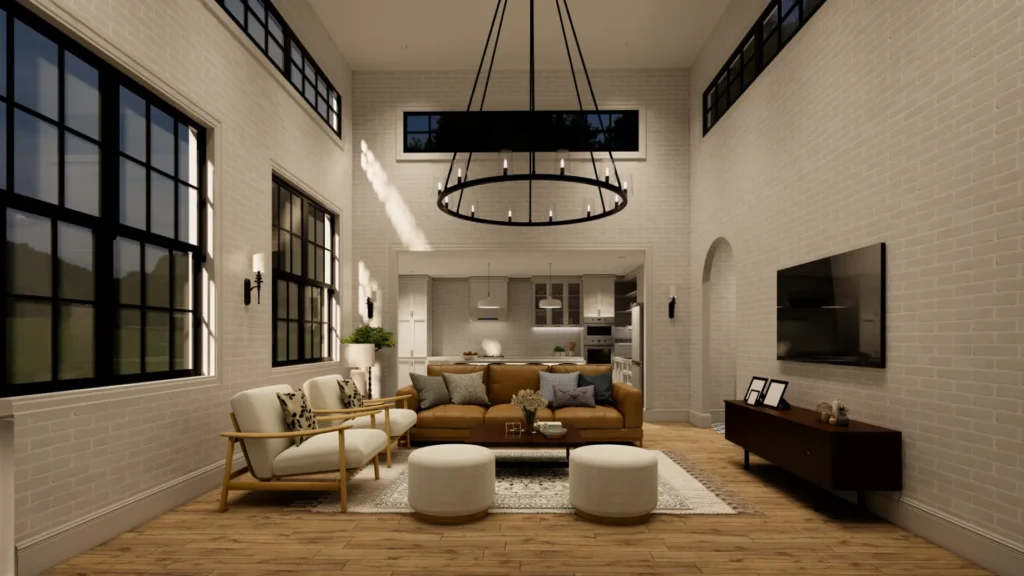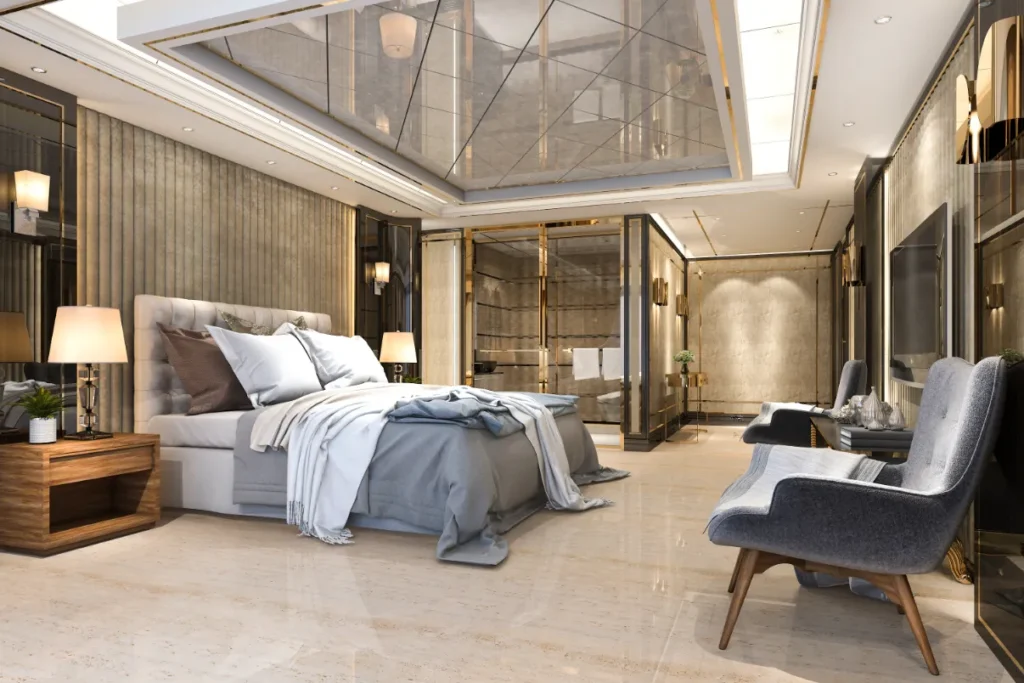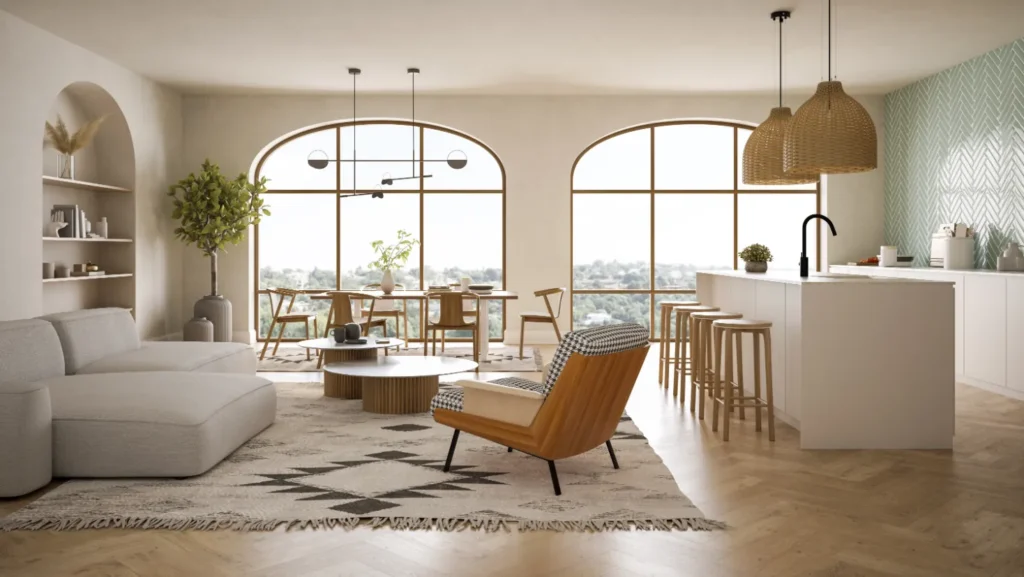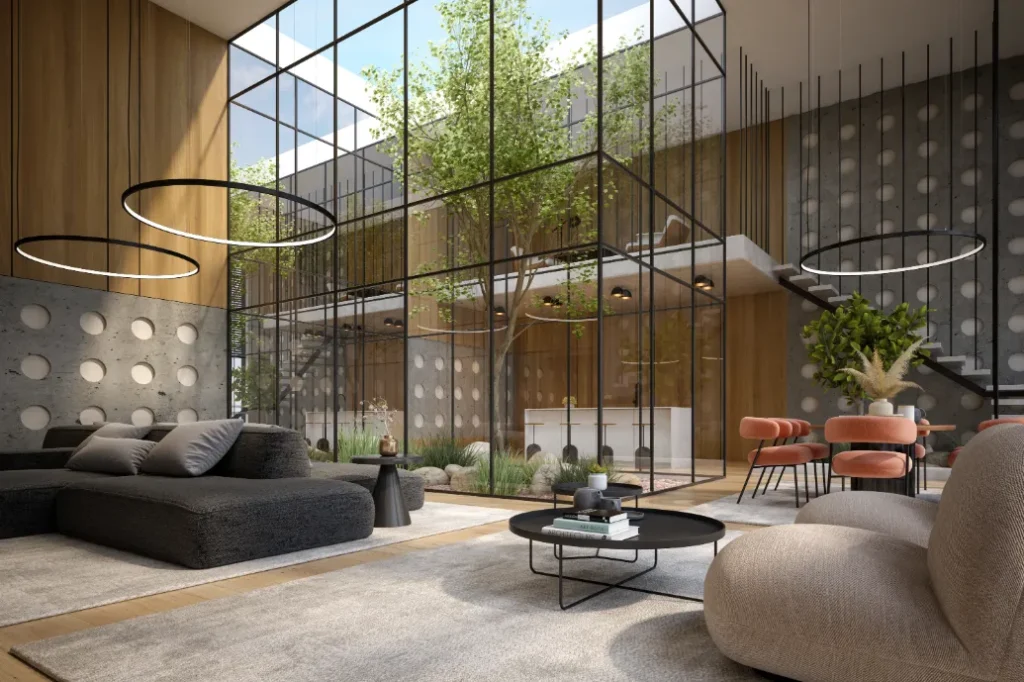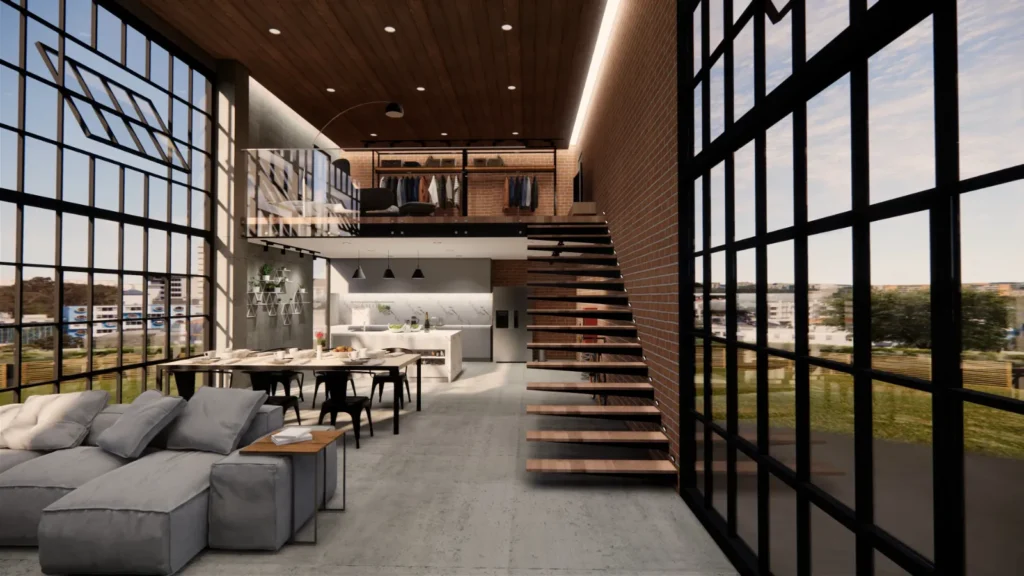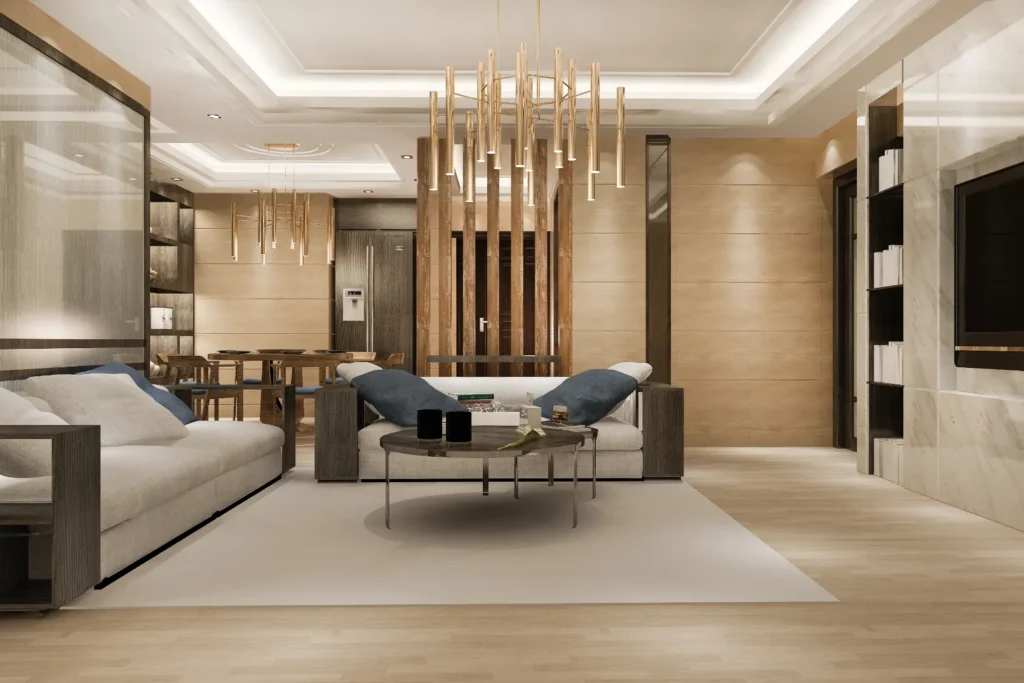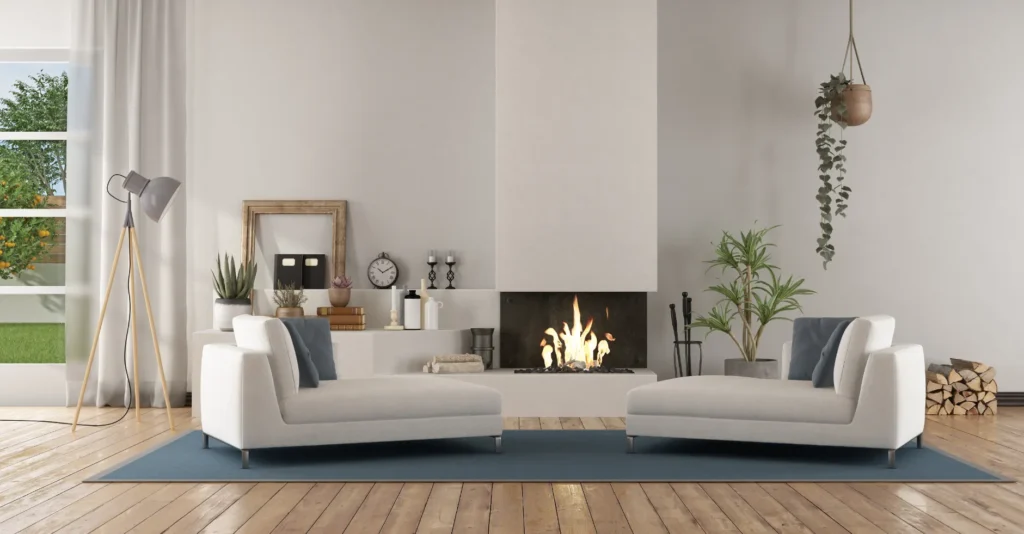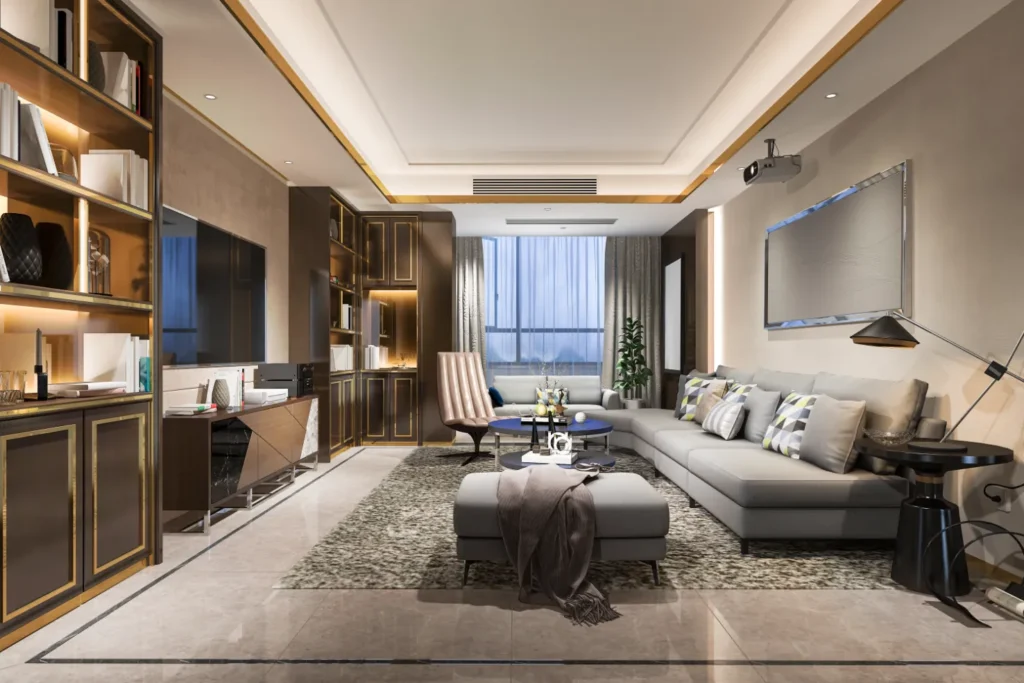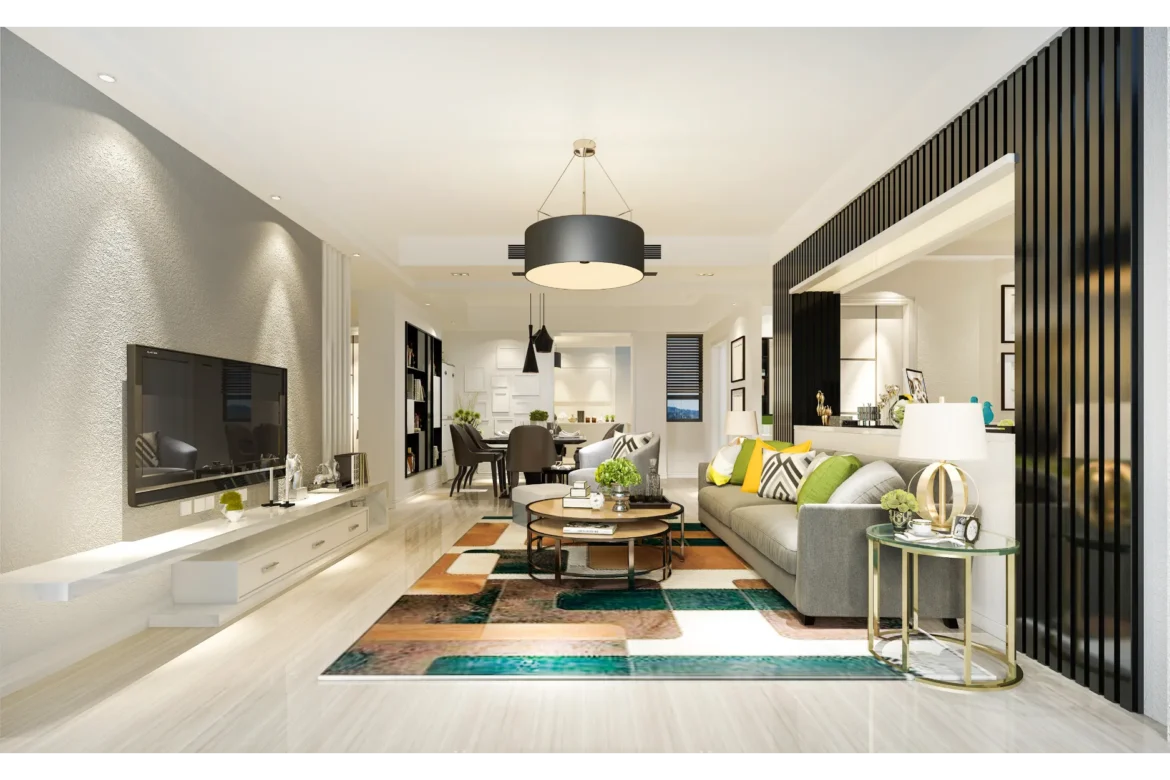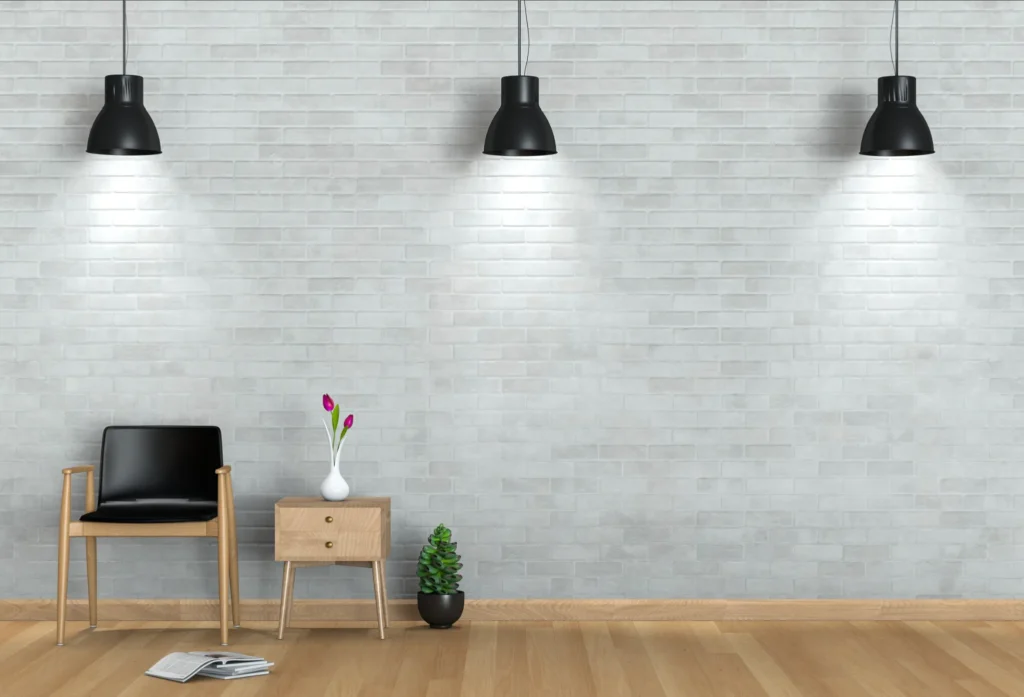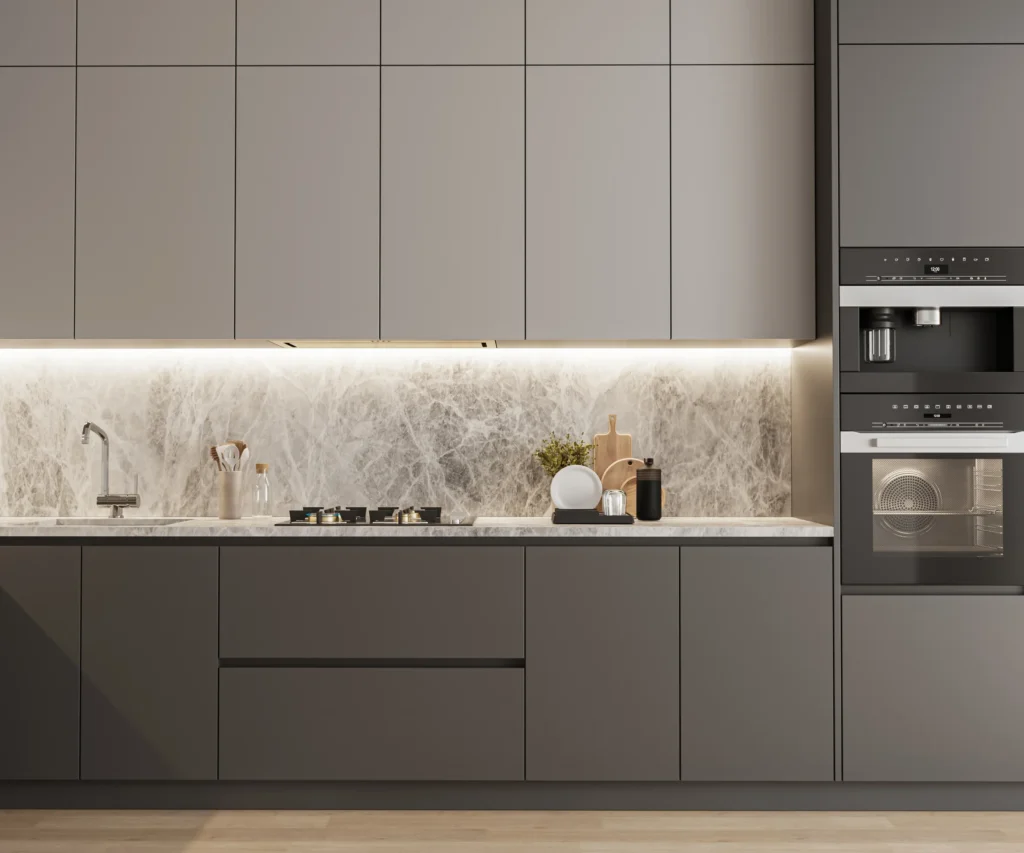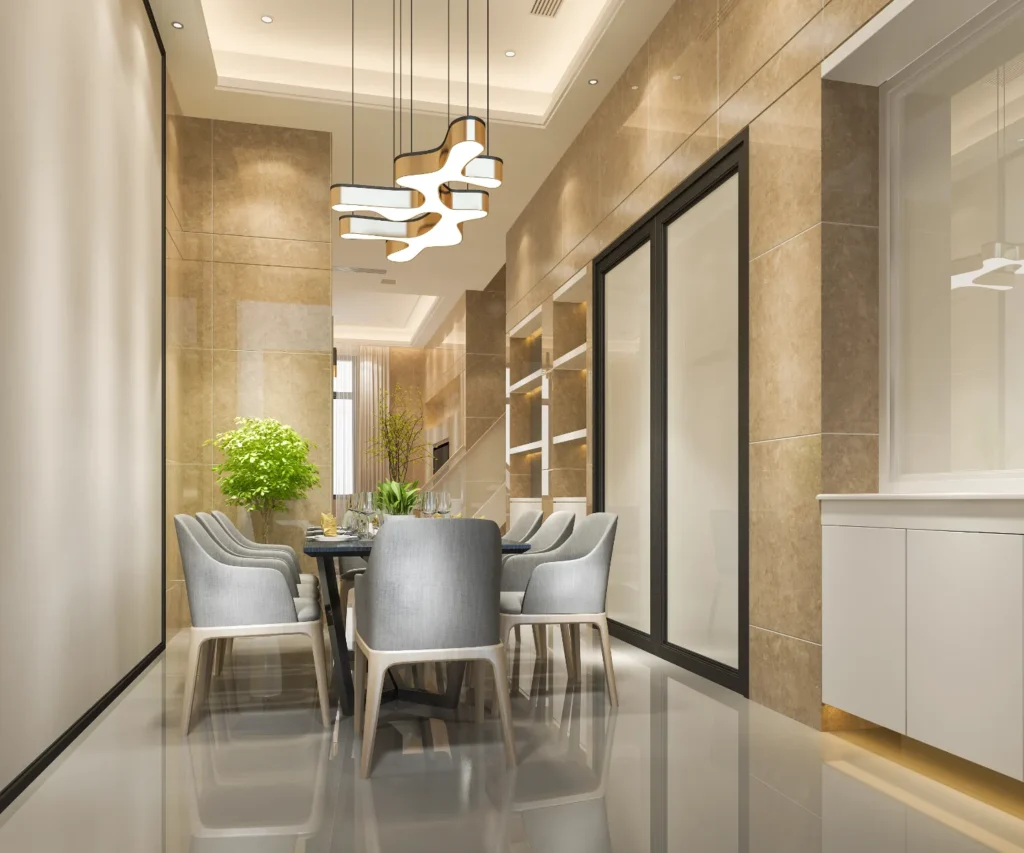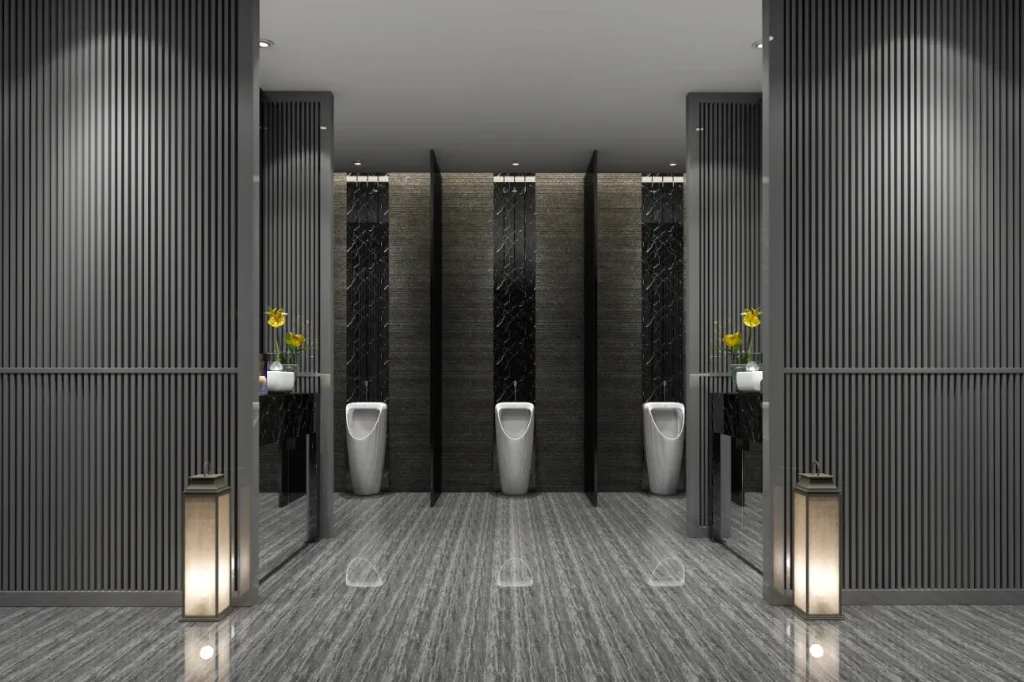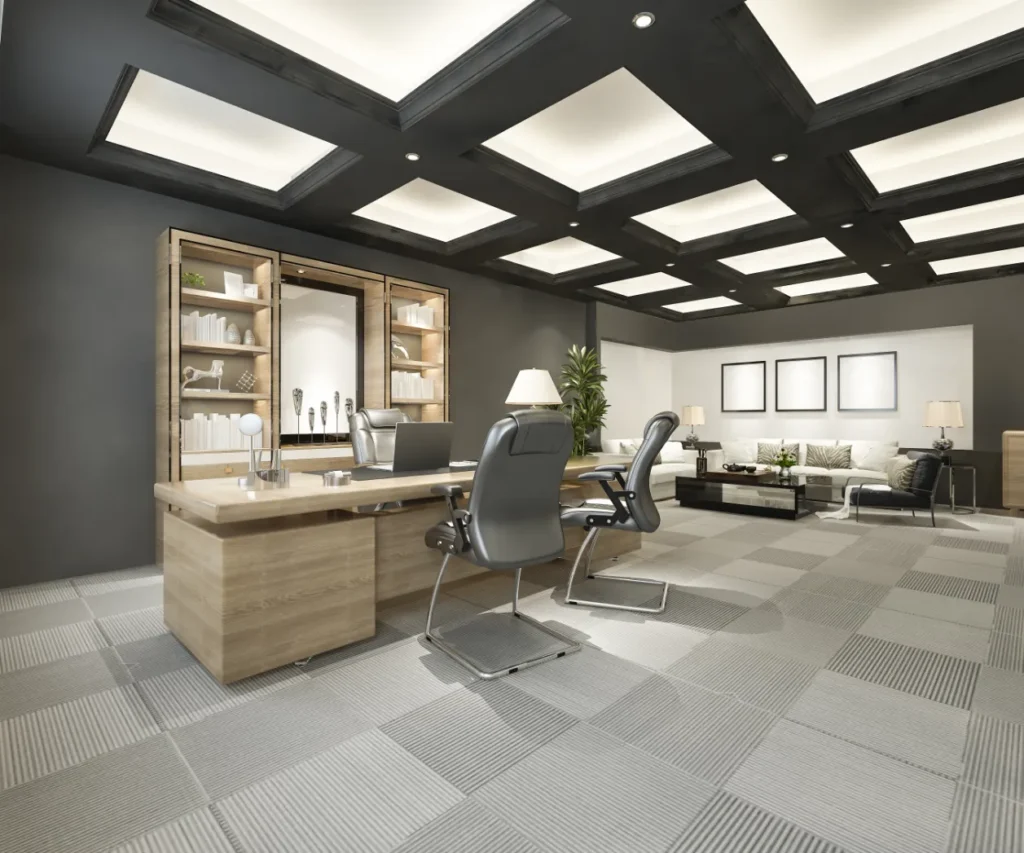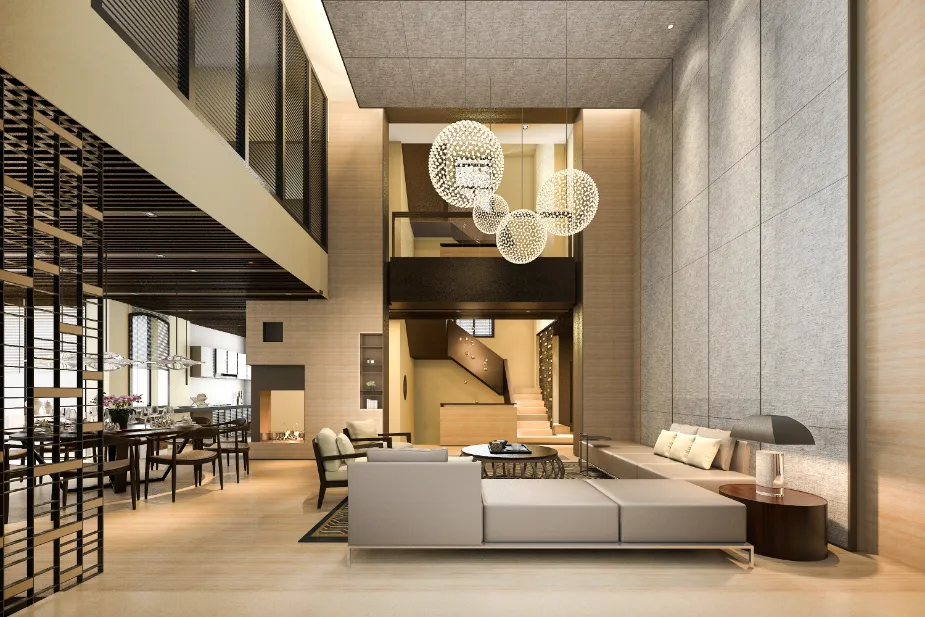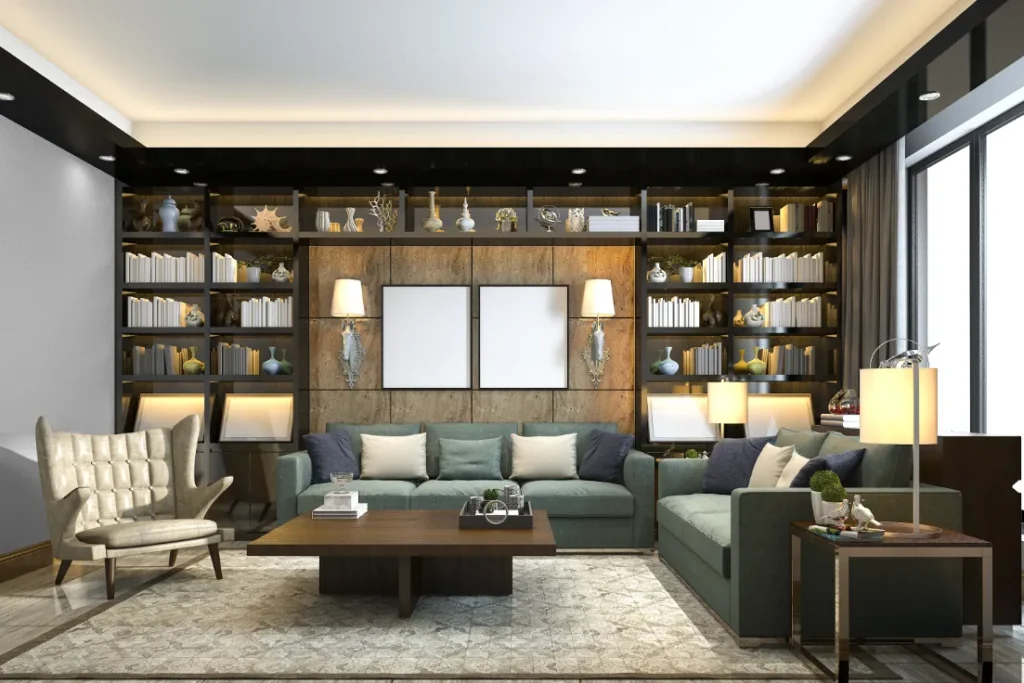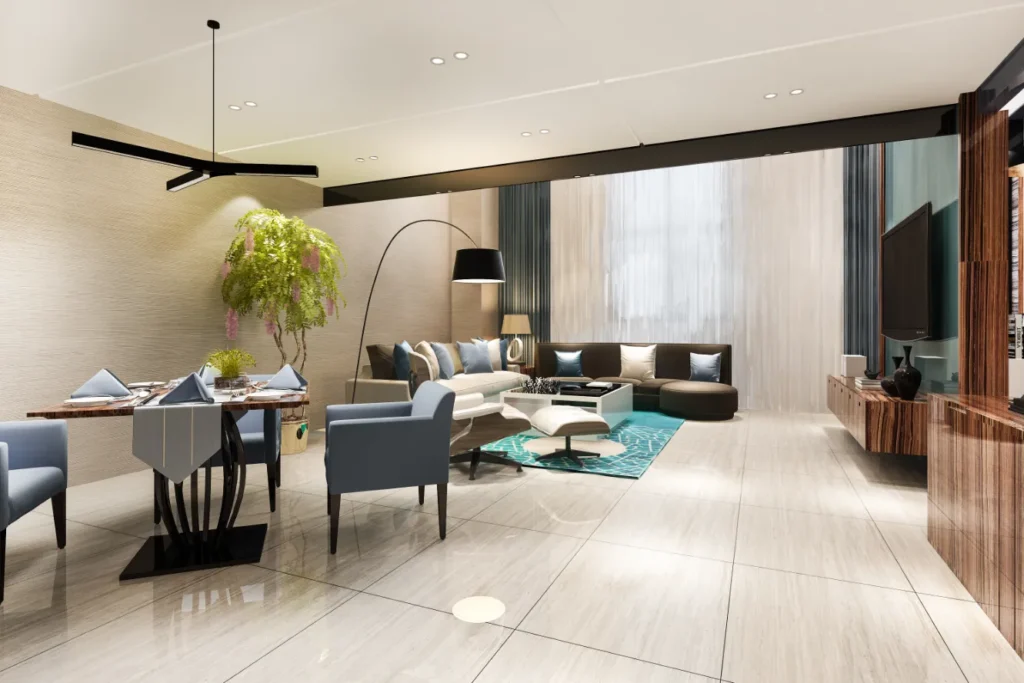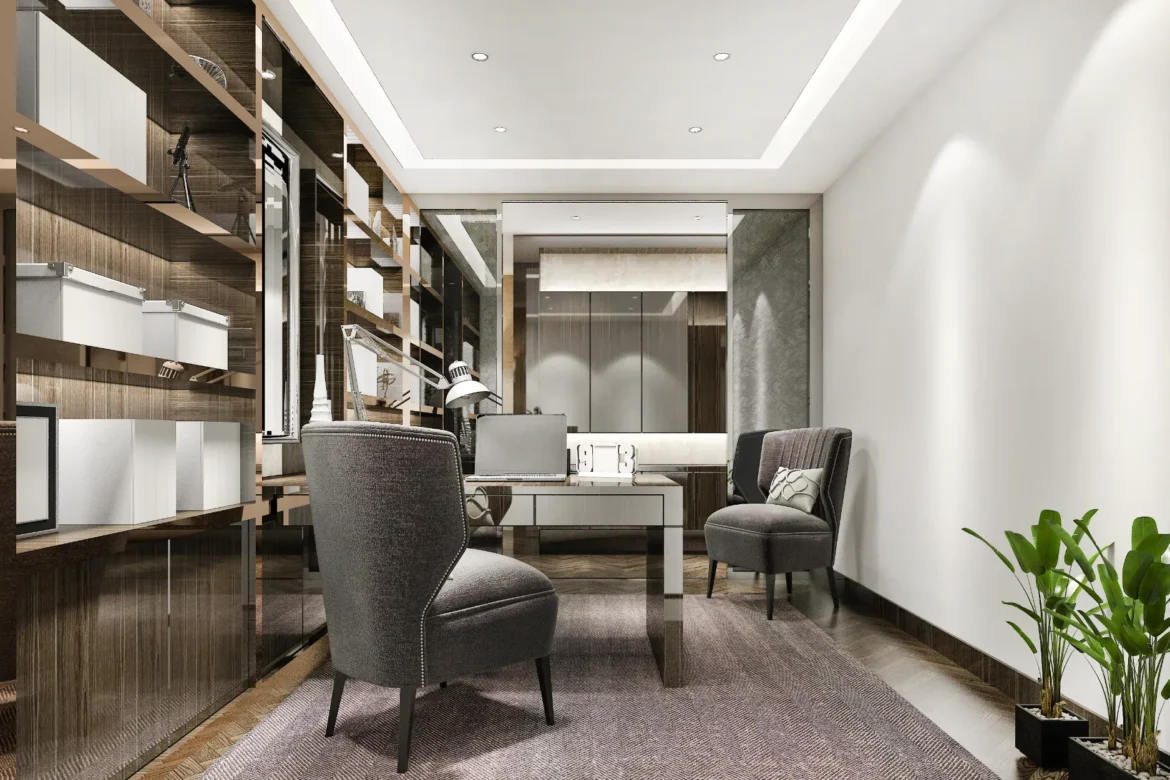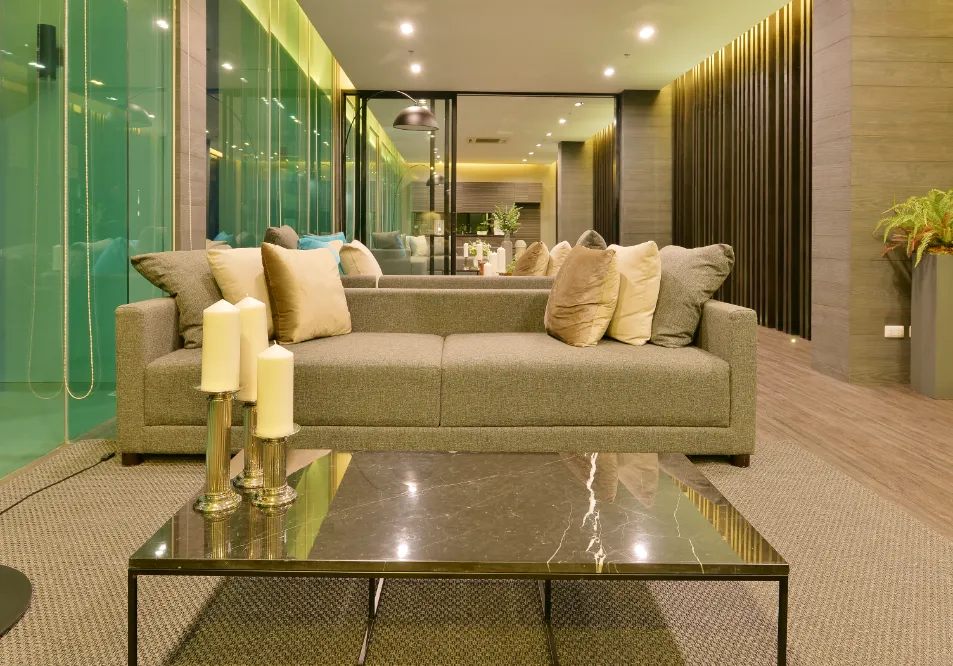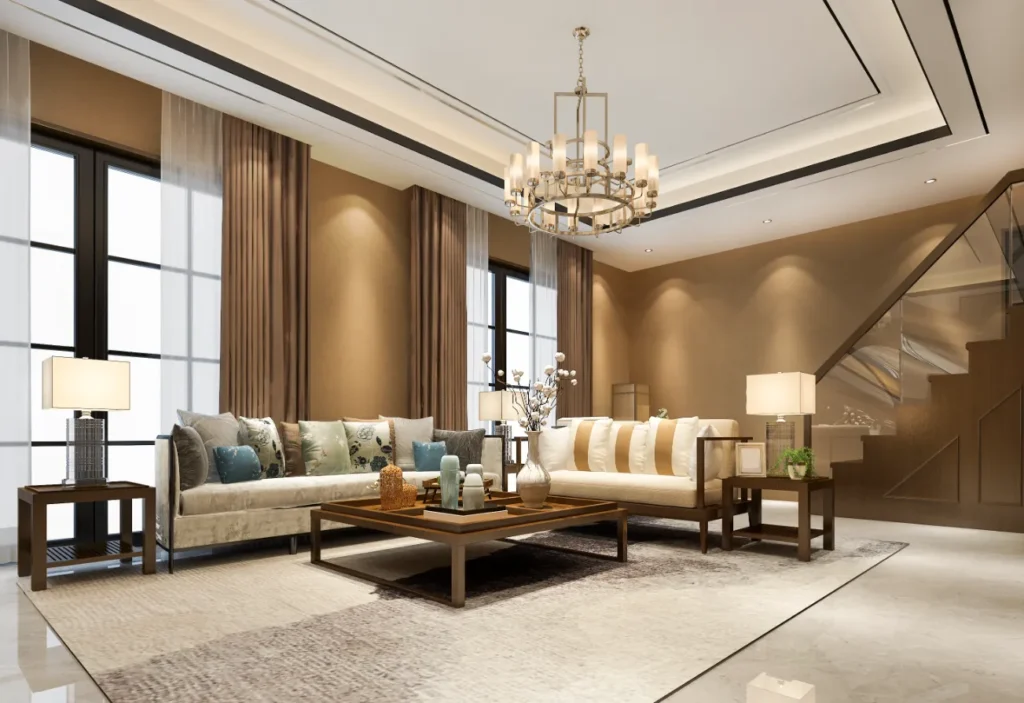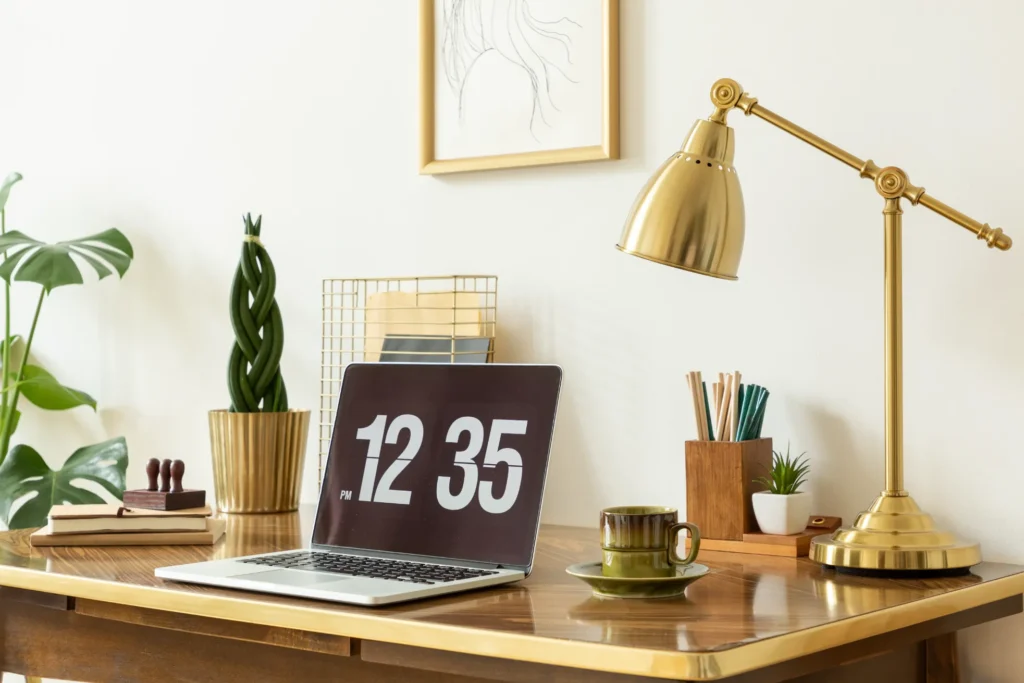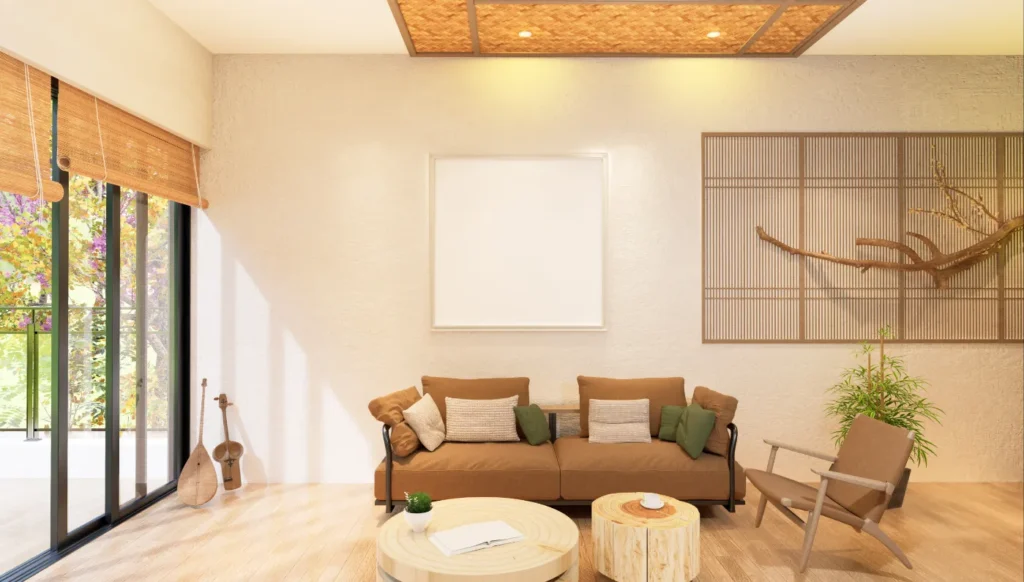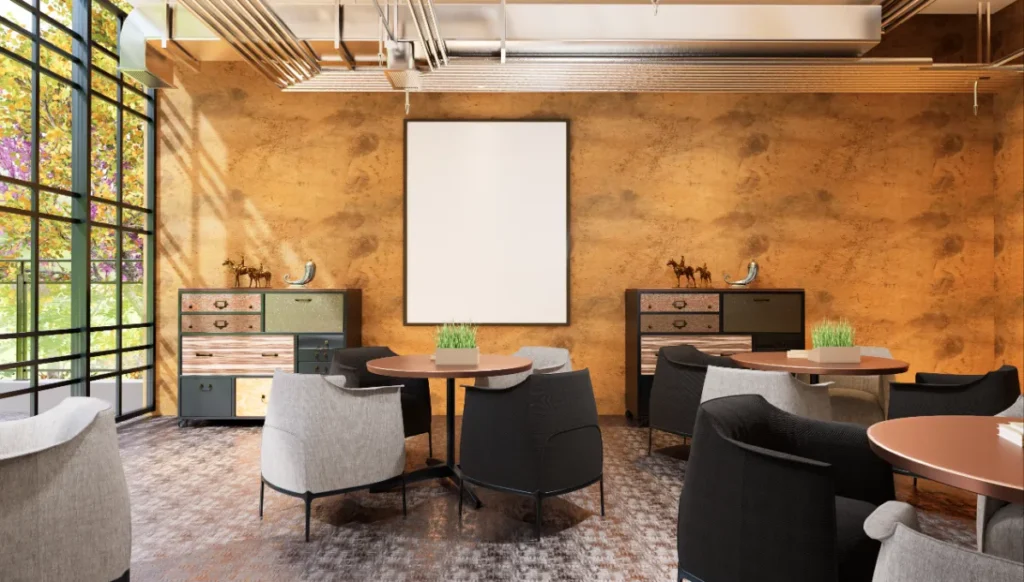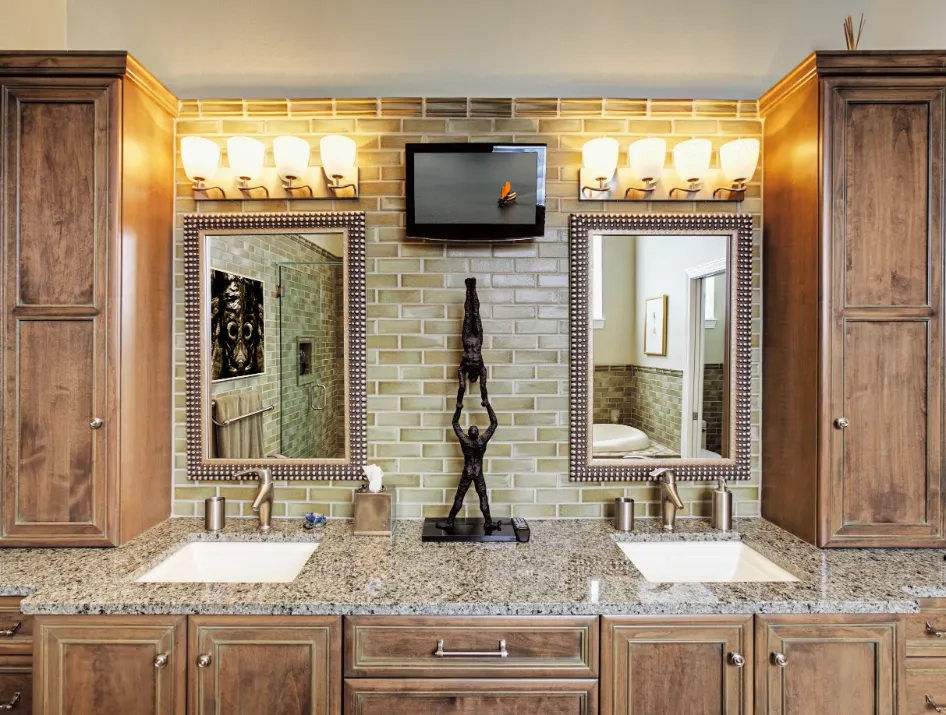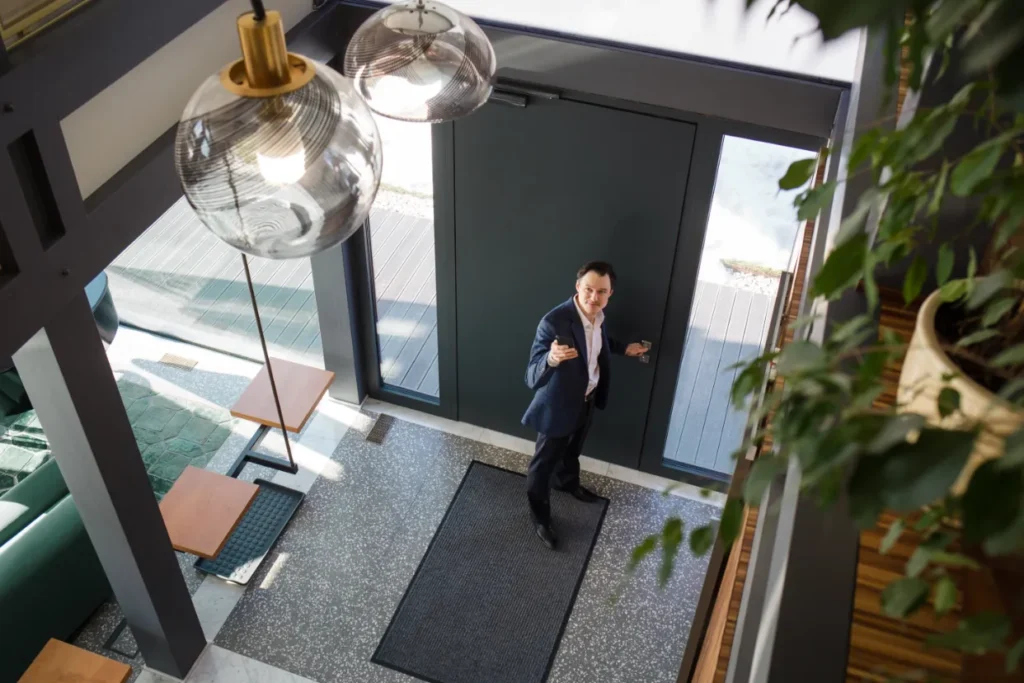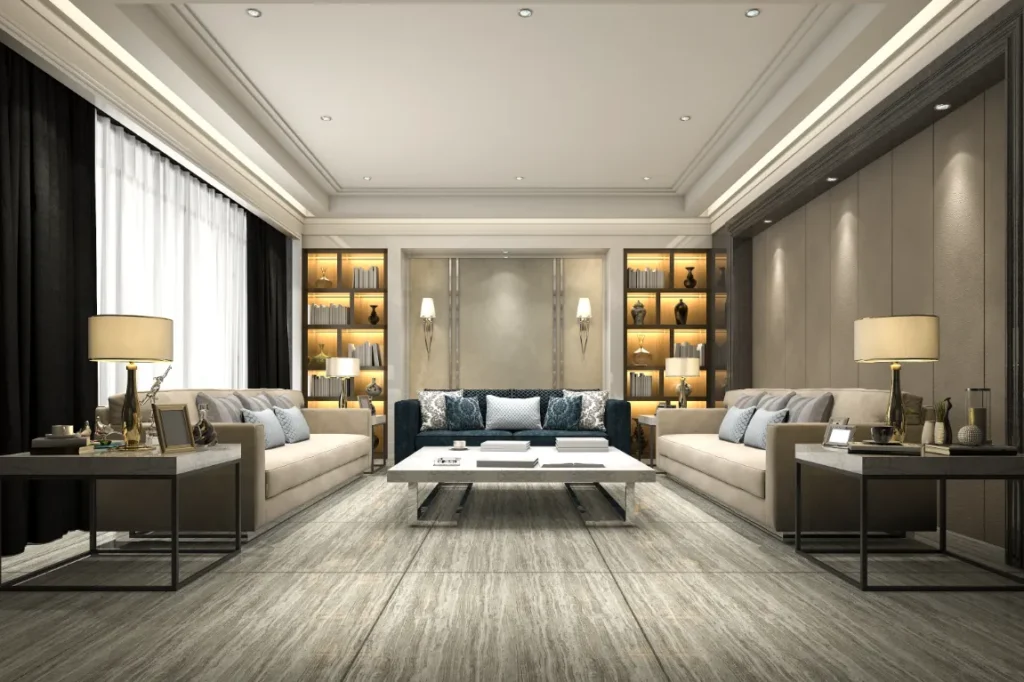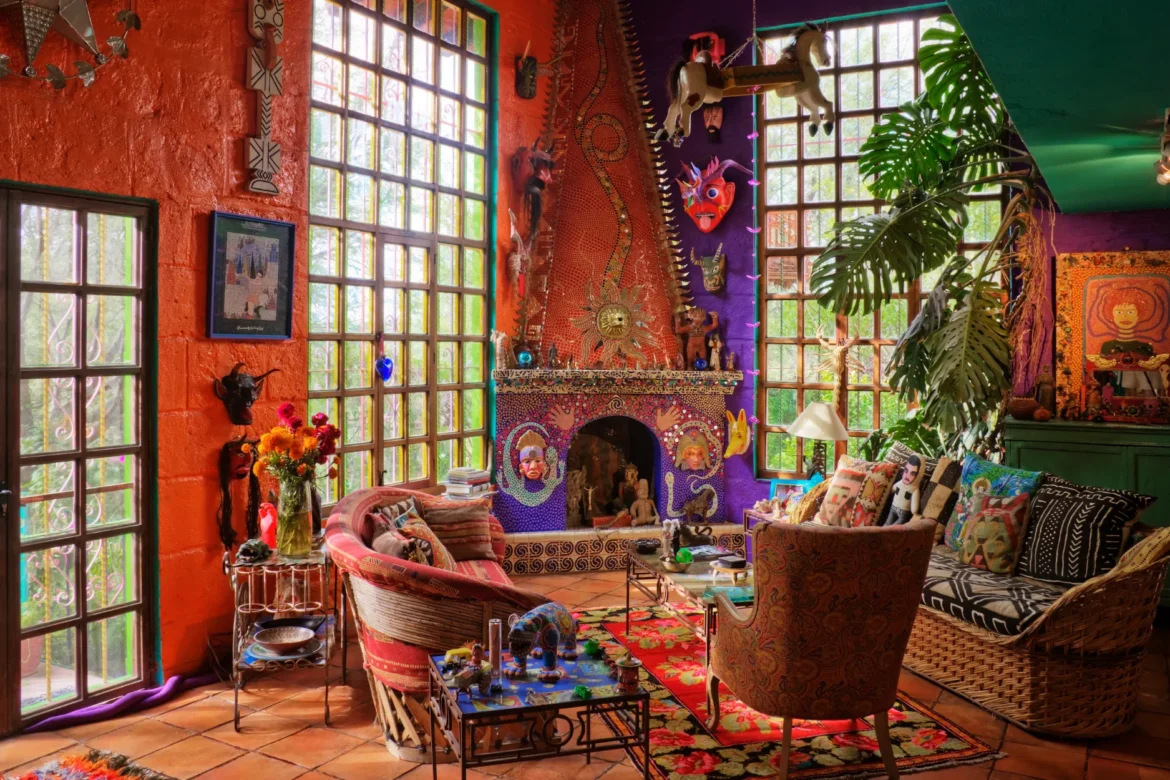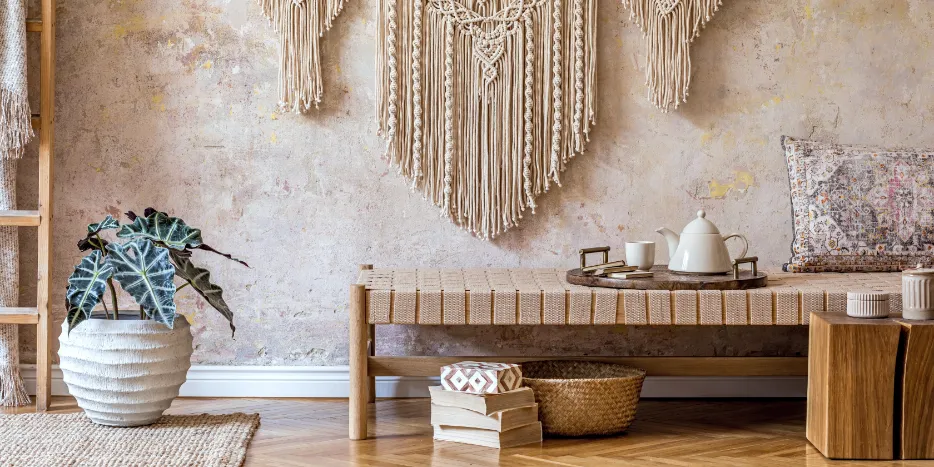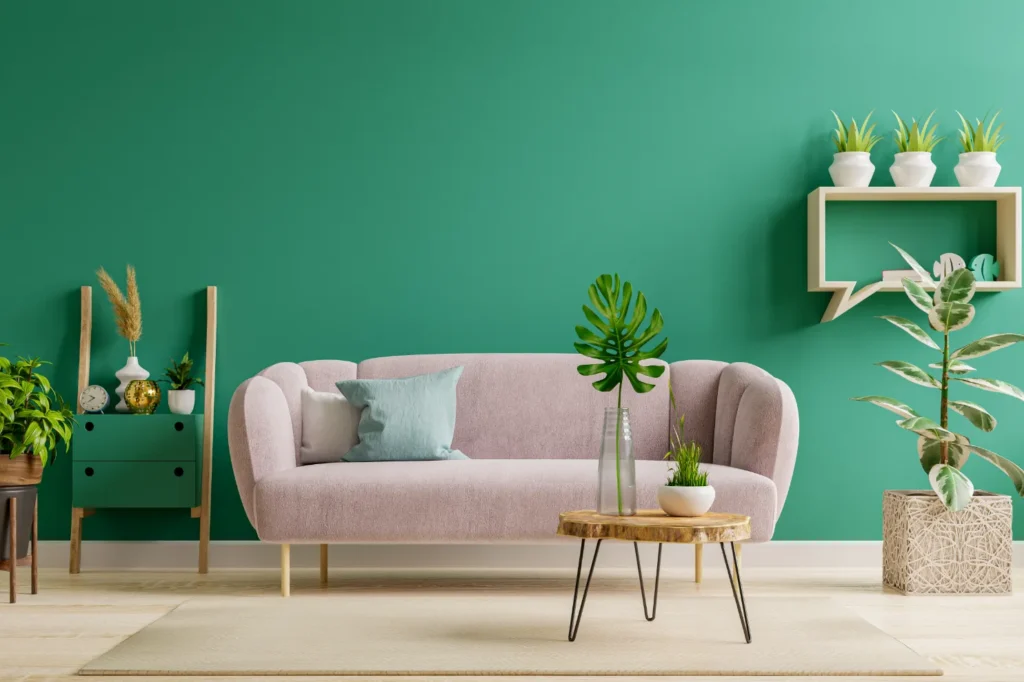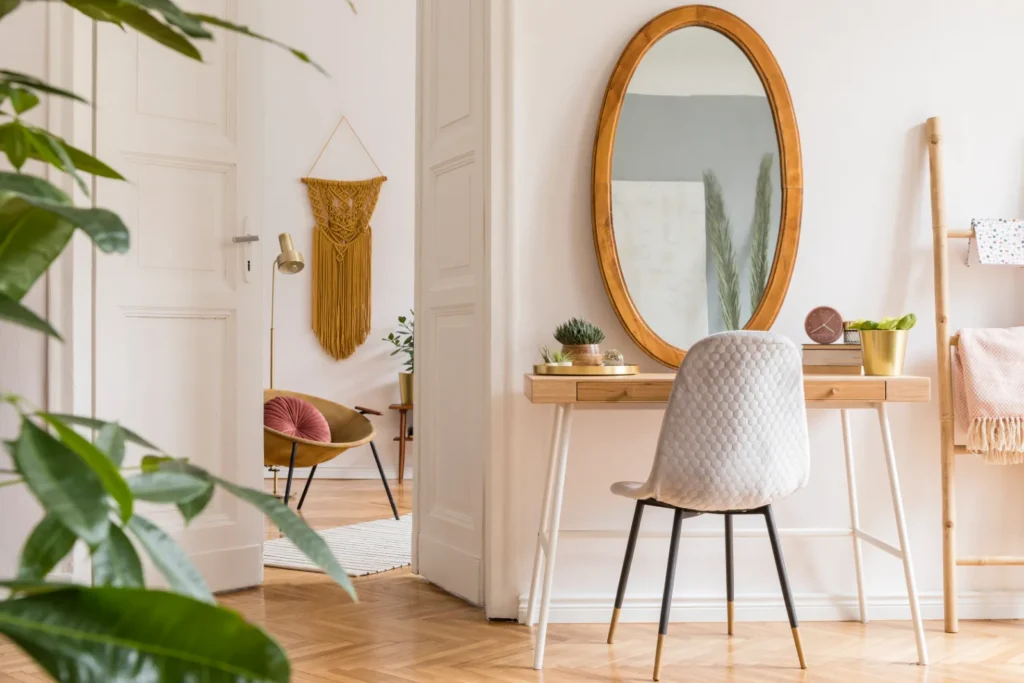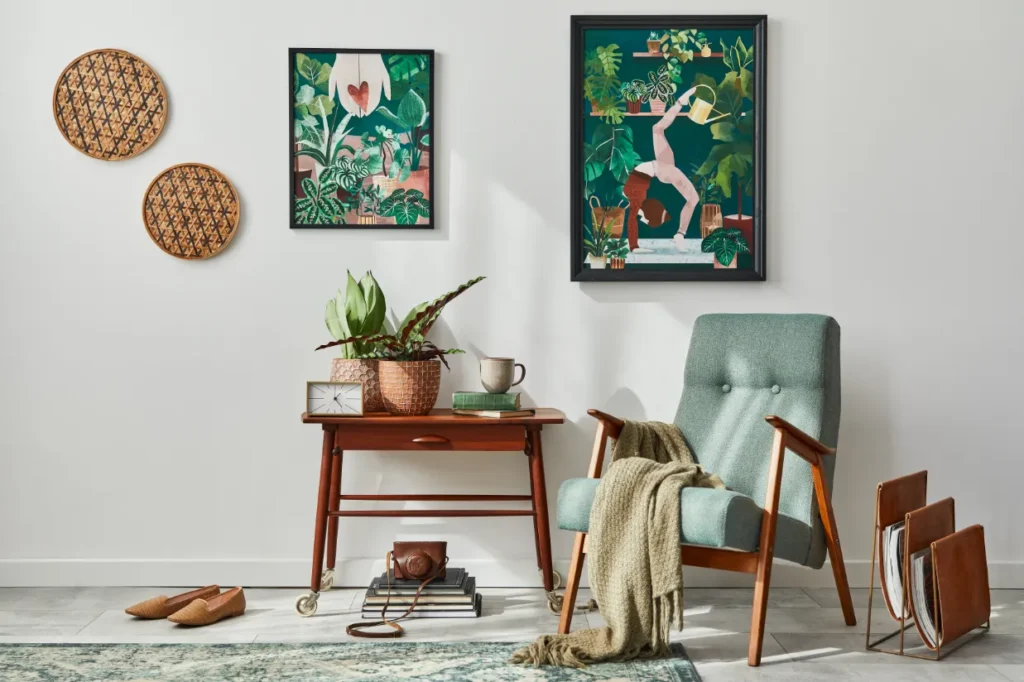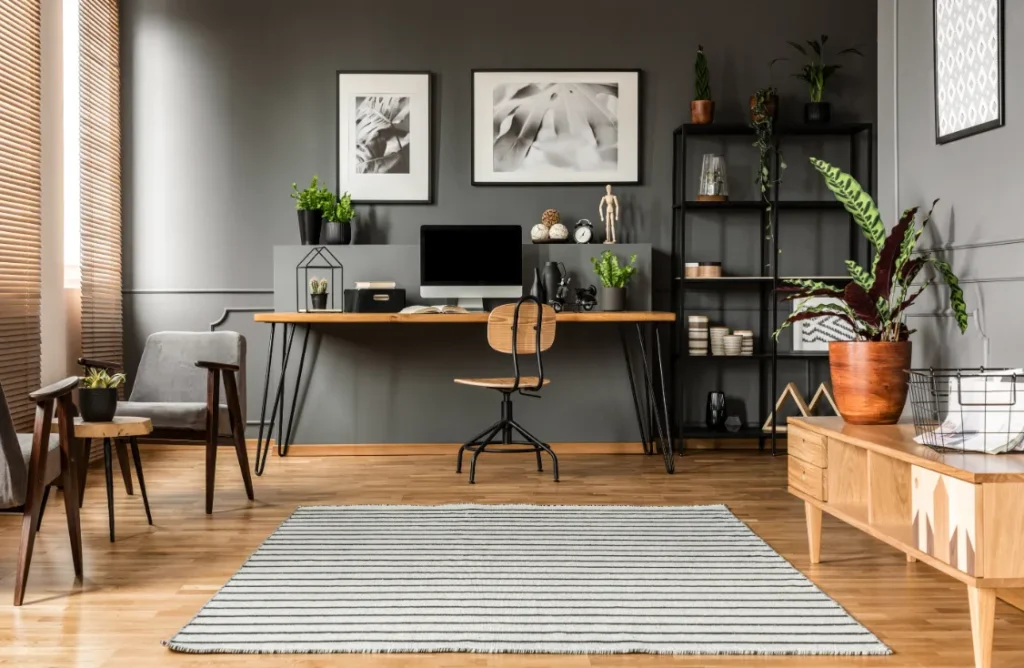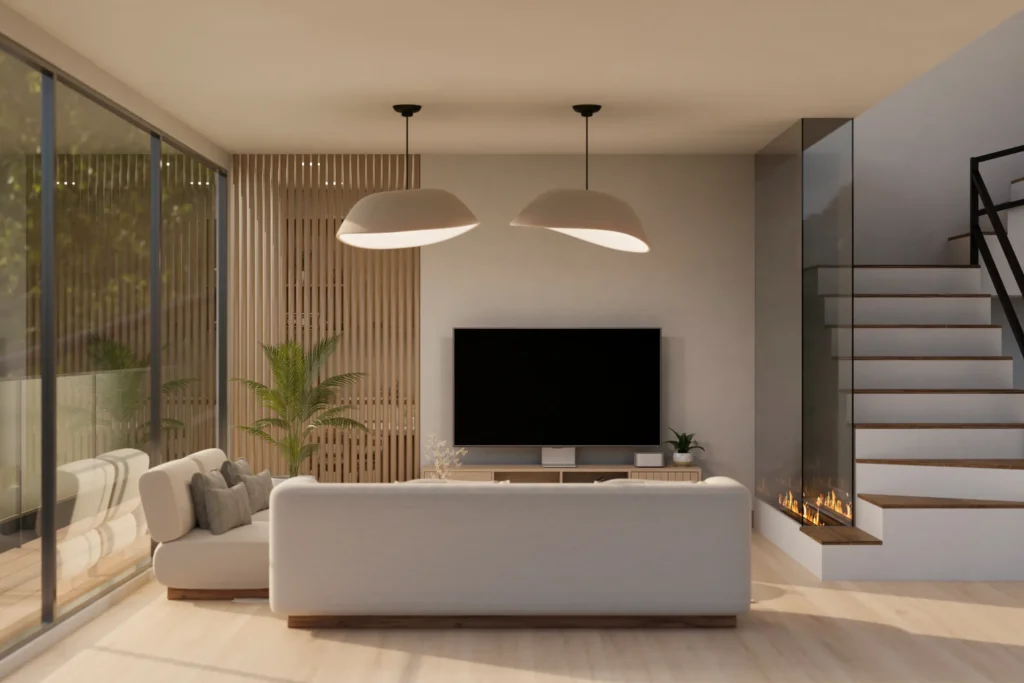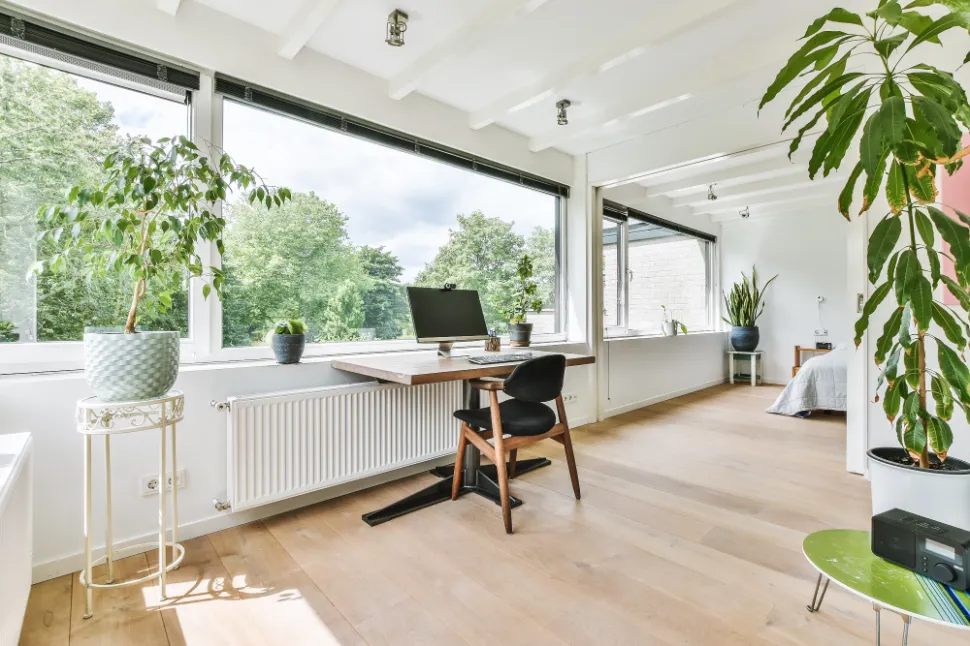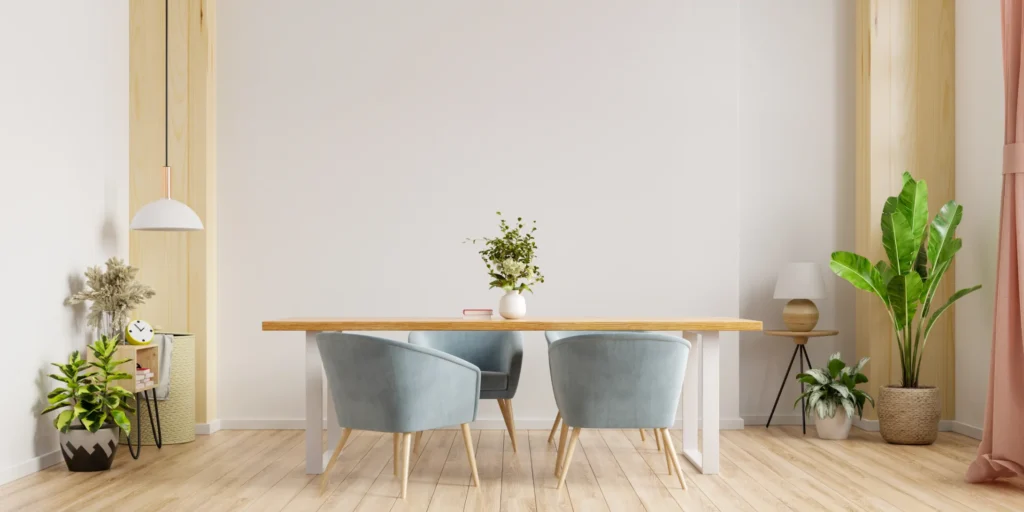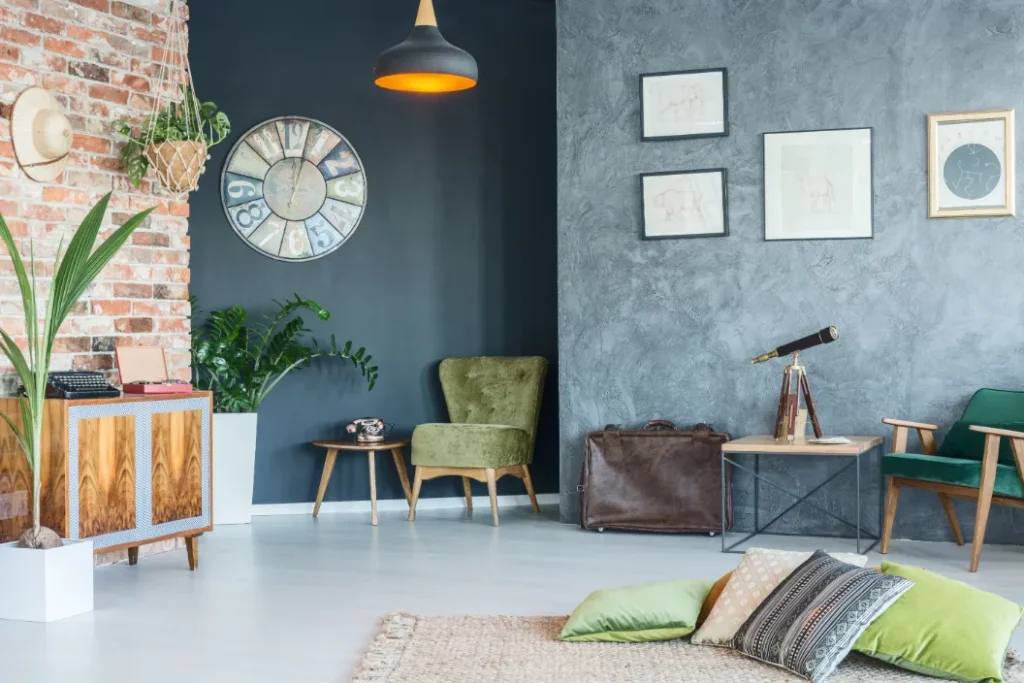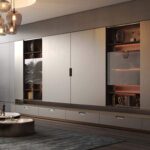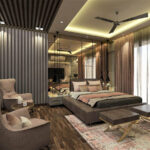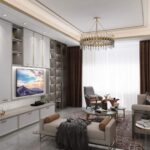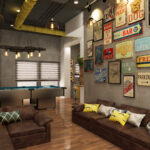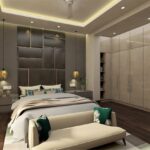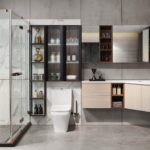Discover The Top 5 Interior Design Trends Of 2024 With Us!
Discover The Top 5 Interior Design Trends Of 2024 With Us!
Overview
Explore the future of interior design in 2024. From Peach Fuzz elegance to Spathrooms tranquility, discover trends shaping transformative spaces.
Step into the vibrant landscape of 2024, where the realm of interior design is poised for a captivating metamorphosis. As we stand on the brink of a new year, there’s an electric sense of anticipation for the unveiling of novel trends that will redefine the visual language of our living spaces. The world of interior design, marked by its perpetual evolution, promises a refreshing journey through groundbreaking styles and inventive concepts.
In this whirlwind of interior design possibilities, staying ahead isn’t merely a choice—it’s a commitment to crafting spaces that seamlessly marry style with functionality. The importance of being at the forefront of interior design trends transcends aesthetics. It’s about curating environments that resonate with individual tastes, enrich daily living experiences, and embrace the delicate balance between beauty and practicality.
By anticipating and embracing forthcoming trends, you wield the ability to mold a home that reflects your personality and meets the demands of contemporary living.
From the lush tones of Peach Fuzz to the allure of metals, the seamless fusion of styles, the whimsical allure of Wes Anderson, and the serene ambiance of Spathrooms—each trend carries the potential to elevate your living spaces into realms of unparalleled beauty and comfort.
Embark with us on this exhilarating journey through the corridors of design innovation. Let’s unlock the gates to a world where creativity knows no boundaries and where staying ahead in the ever-shifting landscape of interior design is not just a choice but a jubilant celebration of individuality and style.
Read Also: Quick Fixes For 6 Rendering Mistakes In Interior Design
Peach Fuzz – The Color of 2024: A Palette for Timeless Elegance
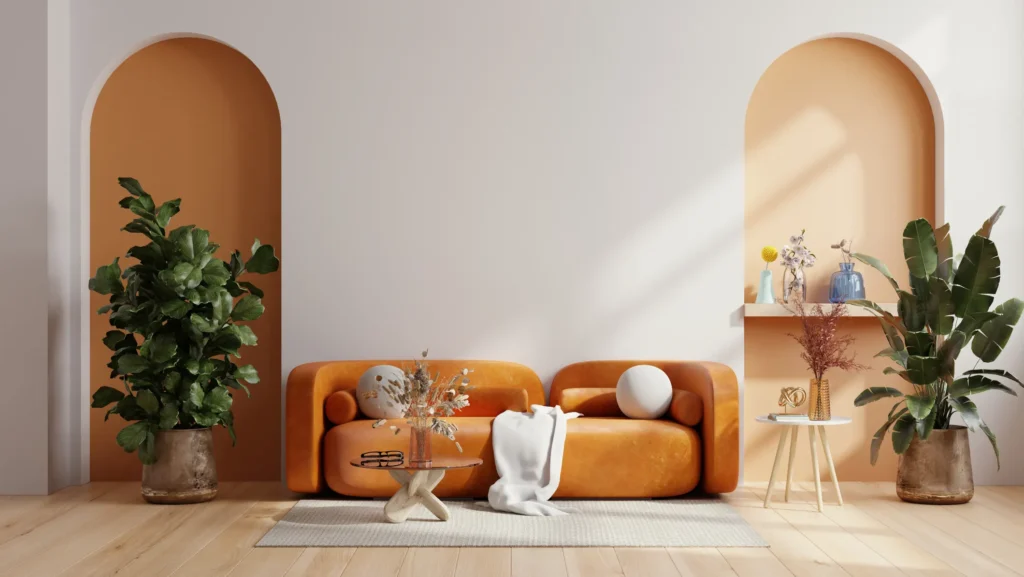
Color in Interior Design: Setting the Tone
Color has an unparalleled ability to transform a space, setting the tone and creating an atmosphere that resonates with its occupants. In the realm of interior design, color is a powerful tool, dictating the mood and influencing the overall aesthetic of a room. As we step into 2024, Peach Fuzz emerges as the frontrunner, capturing attention as the color destined to define the year’s design landscape.
The Psychology of Peach Fuzz: A Subtle Symphony
What makes Peach Fuzz the standout choice for 2024? Delving into the psychology behind color choices reveals that Peach Fuzz brings a subtle yet impactful quality to interior spaces. This delicate hue is associated with warmth, tranquility, and a touch of playfulness. Its soft undertones evoke a sense of comfort, making it an ideal choice for creating inviting and harmonious environments. As experienced interior design professionals understand the significance of aligning interior design choices with emotional responses, Peach Fuzz seamlessly blends style with a comforting ambiance.
Incorporating Peach Fuzz: Tips for Every Room
Living Rooms: A Soothing Social Hub
Peach Fuzz can transform living rooms into serene retreats. Consider incorporating it through accent walls, cozy throws, or even plush cushions. Pairing Peach Fuzz with neutral tones or complementary colors like muted greens or soft blues can create a balanced and inviting space.
Bedrooms: A Tranquil Oasis
In bedrooms, Peach Fuzz lends itself to creating a tranquil oasis for rest and relaxation. Beddings, curtains, or even a statement headboard in this gentle hue can infuse the room with a calming energy. For a sophisticated look, pair Peach Fuzz with rich textures like velvet or metallic accents.
Kitchens: Subtle Elegance
Even in the heart of the home, Peach Fuzz can find its place. Consider incorporating it through cabinet accents, kitchenware, or even as a backdrop for open shelving. Balancing Peach Fuzz with crisp whites or natural wood tones brings subtle elegance to the kitchen space.
Examples of Peach Fuzz Excellence

Look no further than upscale cafes or trendy boutiques to witness the charm of Peach Fuzz in action. The color effortlessly blends sophistication with a touch of whimsy, creating spaces that are not only visually appealing but also emotionally resonant. From sleek modern interiors to cozy traditional settings, Peach Fuzz proves its versatility, making it an ideal choice for homeowners seeking a timeless and trendy palette for their spaces.
In embracing Peach Fuzz as the color of 2024, interior design takes a step towards creating environments that are not just visually pleasing but also emotionally enriching. This subtle yet impactful hue opens doors to a world where every room becomes a canvas, painted with the warmth and elegance that Peach Fuzz brings to the forefront of design trends.
Go Metal: Elevating Interior Spaces with Metallic Flourish
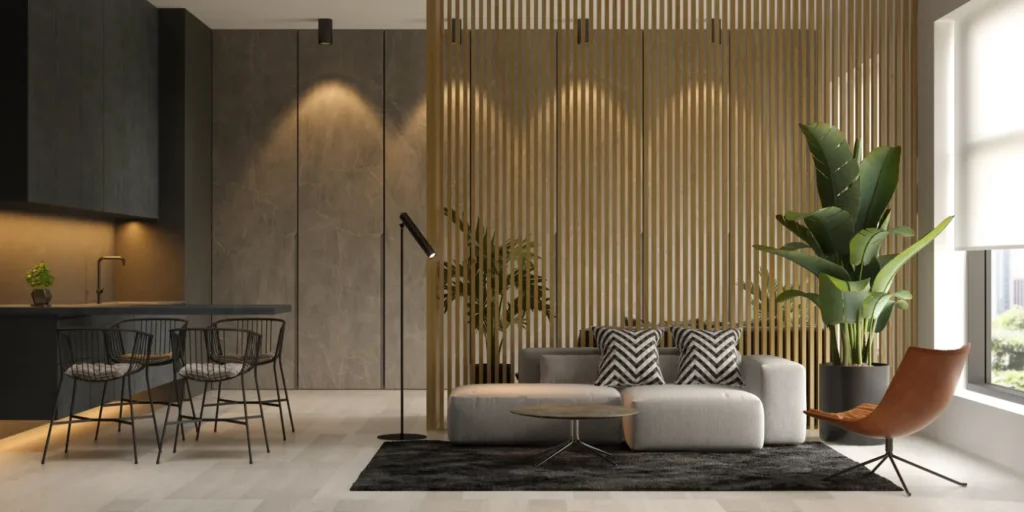
The Resurgence of Metal Elements
In the ever-evolving world of interior design, we witness a delightful resurgence of metal elements, bringing an air of opulence and refinement to living spaces. Metals, once relegated to specific styles, are now making a bold statement across various design aesthetics. From the sleek lines of modern interiors to the rugged charm of industrial spaces, metals are reclaiming their status as versatile design elements.
Key Players in 2024: Brass, Copper, and Gold Take Center Stage
As we step into 2024, brass, copper, and gold emerge as the undeniable stars of the show. These metals, with their distinctive hues and finishes, play a pivotal role in shaping the aesthetic landscape. Brass brings a warm, vintage appeal; copper exudes rustic charm, while gold injects a dose of glamour. Their versatility allows them to seamlessly integrate into diverse design schemes, making them must-haves for the discerning interior designer.
Adding Sophistication and Warmth: The Magic of Metal Accents
The allure of metal accents lies in their ability to infuse any space with a touch of sophistication and warmth. These metallic tones, whether subtly incorporated or boldly featured, elevate the overall ambiance. Picture a living room adorned with brass-framed mirrors or a kitchen with copper pendant lights—each element contributing to an atmosphere of elegance and coziness.
Practical Advice for Integration
Modern Marvels: The Minimalist Approach
For modern interiors, consider sleek, polished brass or gold accents. Think metallic furniture legs, lighting fixtures, or decorative sculptures. The key is to maintain a sense of simplicity and clean lines, letting the metal elements act as focal points without overwhelming the space.
Industrial Chic: Embracing Raw Appeal
In industrial settings, copper can shine, quite literally. Think exposed pipes, copper pendant lights, or even industrial-style brass hardware. These metals bring an edge and rawness that complements the robust character of industrial design.
Examples of Metal Magic
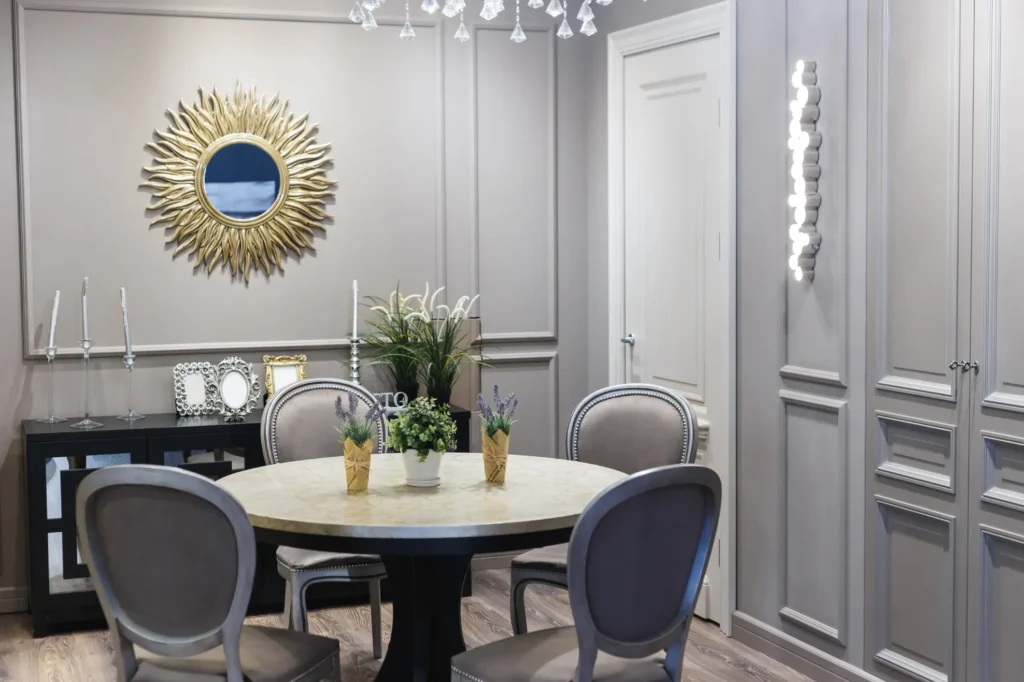
From the polished brass detailing in upscale penthouses to the rustic copper accents in hipster cafes, examples of metal magic are everywhere. In luxury homes, gold-trimmed furniture and fixtures exude opulence, while brass and copper elements in bohemian interiors add an eclectic touch. These examples showcase the adaptability of metals, proving that they are not just design elements but transformative statements.
In embracing the metallic renaissance, interior design in 2024 embraces the timeless allure of brass, copper, and gold. As key players, these metals bring versatility, warmth, and a touch of glamour to spaces, transcending design boundaries. From modern minimalism to industrial chic, the magic of metals leaves an indelible mark on interiors, turning ordinary spaces into extraordinary showcases of style and sophistication.
Related: 4 Easy Materials In Interior Design To Amaze Your Clients
Mix and Match: Crafting Eclectic Havens in 2024
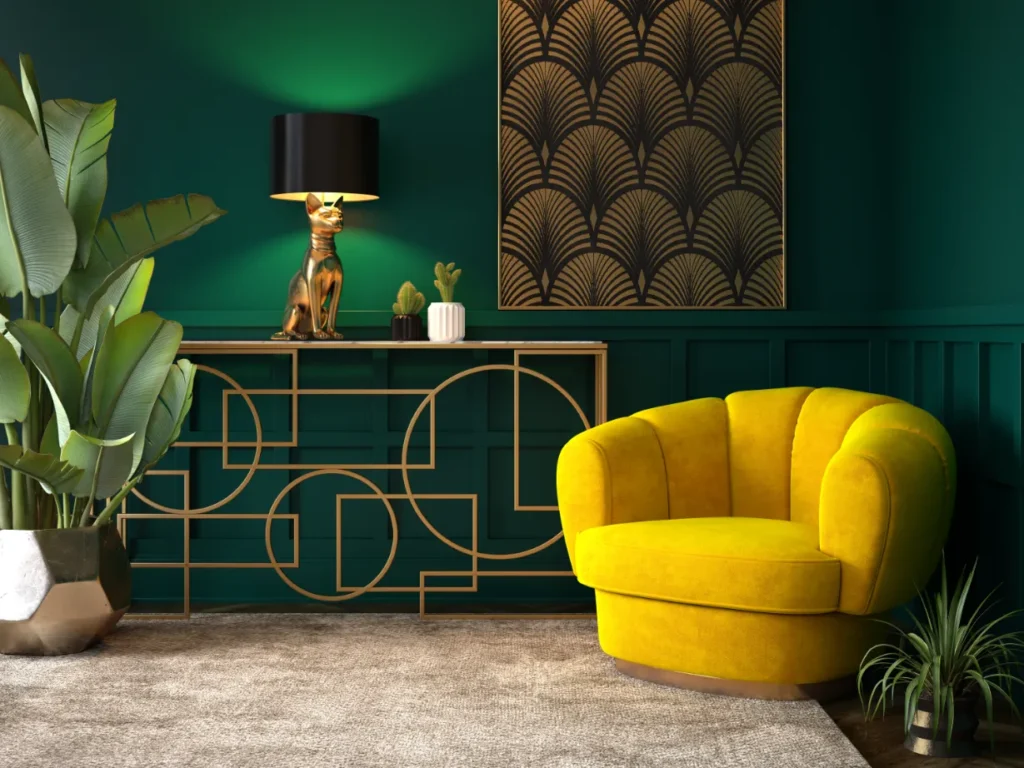
Combining Design Styles: The Rise of Eclectic Spaces
In 2024, the interior design scene is embracing a trend that champions individuality and creativity – the art of mixing and matching different design styles. No longer confined to rigid categories, the beauty lies in the amalgamation of diverse elements to create spaces that are uniquely yours. This trend, often referred to as eclectic design, celebrates the freedom to blend traditional and contemporary, vintage and modern, creating a tapestry of personal expression within your living space.
Examples of Successful Mix-and-Match Combinations
Imagine a living room where a classic Chesterfield sofa cozies up with sleek, modern coffee tables, or a dining area where antique chairs surround a contemporary glass table. These successful mix-and-match combinations breathe life into spaces, showcasing the harmony that can emerge from seemingly disparate styles. Blending traditional and contemporary elements not only adds visual interest but also tells a story about the inhabitant’s tastes and influences.
Tips for Achieving Balance and Cohesion
Color Palette Harmony
Select a cohesive color palette that ties together disparate styles. A unified color scheme can create a visual thread, ensuring a sense of continuity even with diverse furnishings.
Scale and Proportion
Pay attention to the scale of furniture and décor items. Balancing larger statement pieces with more delicate elements helps maintain a harmonious atmosphere.
Consistent Textures
Integrate consistent textures across different styles to create a sense of cohesion. Whether it’s the warmth of wood or the coolness of metal, textures can provide a unifying element.
Importance of Personalization in Interior Design
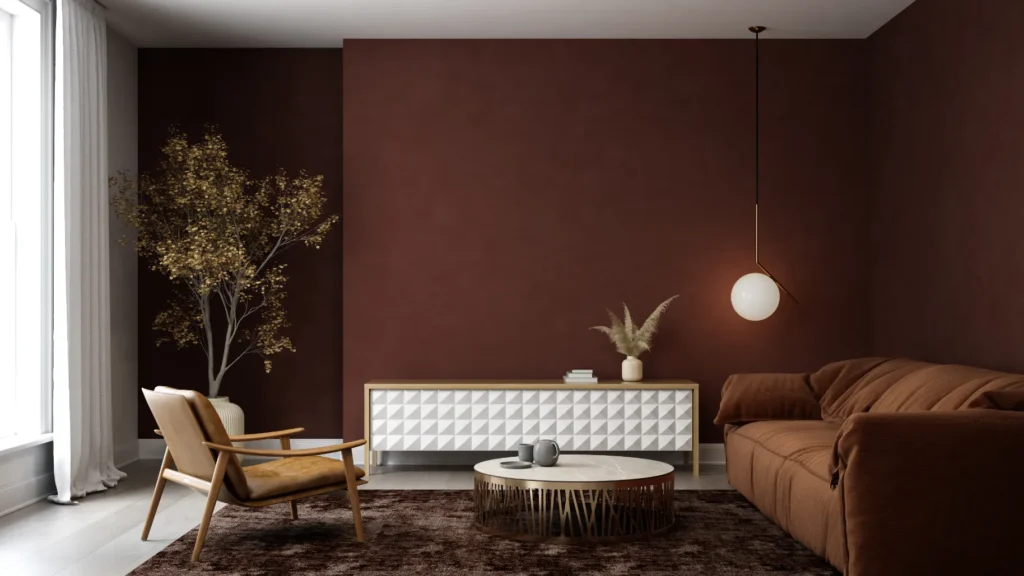
At the core of the mix-and-match trend is the importance of personalization and self-expression in interior design. Your home should tell your story, reflecting your experiences, interests, and personality. By embracing an eclectic mix of styles, you infuse your living space with a unique character that goes beyond trends. It becomes a canvas for your individuality, where every piece holds meaning and contributes to the symphony of your personal style.
Examples of Personalized Design Statements
Think about a bedroom adorned with a blend of vintage family heirlooms and modern artwork, or a home office featuring a mix of mid-century modern furniture and eclectic décor collected from travels. These examples showcase the power of personalization, where the mix-and-match trend becomes a vehicle for self-expression, turning each room into a narrative of the inhabitant’s life and style.
Wes Anderson Style: Whimsy Woven into Your Space
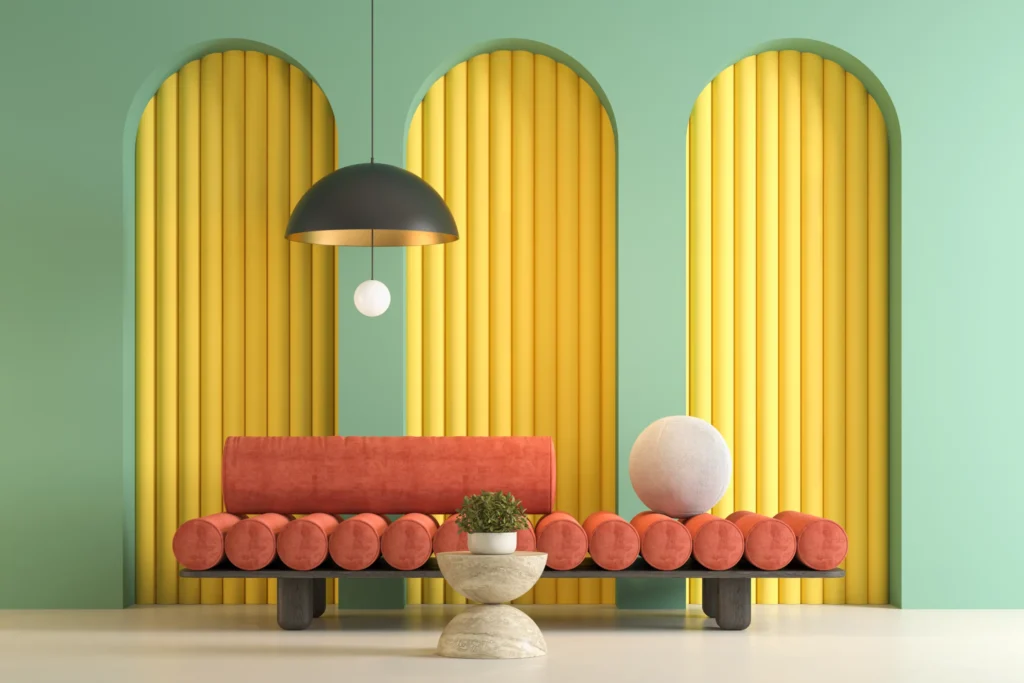
Unique Aesthetic of Wes Anderson
Dive into the enchanting world of Wes Anderson, a filmmaker renowned for his distinctive visual style that transcends the screen and infiltrates the realm of interior design. Anderson’s style is a captivating fusion of enchanting whimsy, nostalgic charm, and meticulous attention to detail. As we venture into 2024, the influence of Wes Anderson’s cinematic charm extends beyond the silver screen, inspiring a surge in interior design that mirrors the quirky elegance of his films.
Key Elements of Wes Anderson’s Style
The Wes Anderson style is a symphony of visual delights, characterized by key elements that create a unique and recognizable aesthetic:
Pastel Color Palettes
Think soft pinks, muted yellows, and gentle blues—Wes Anderson’s films are a celebration of pastel hues. Infusing your space with these colors brings an immediate sense of whimsy and playfulness.
Symmetrical Compositions
Symmetry is a hallmark of Anderson’s visual language. Whether considering the arrangement of a room or the positioning of furniture, strive for a sense of equilibrium and organization. Symmetry imparts a sense of cohesion and visual harmony to your space.
Vintage Aesthetics:
Wes Anderson’s films often evoke a bygone era, and this vintage charm is a key element in his style. Incorporate vintage furniture, retro accessories, or even flea market finds to capture the timeless allure of his aesthetic.
Practical Tips for Infusing Wes Anderson Charm
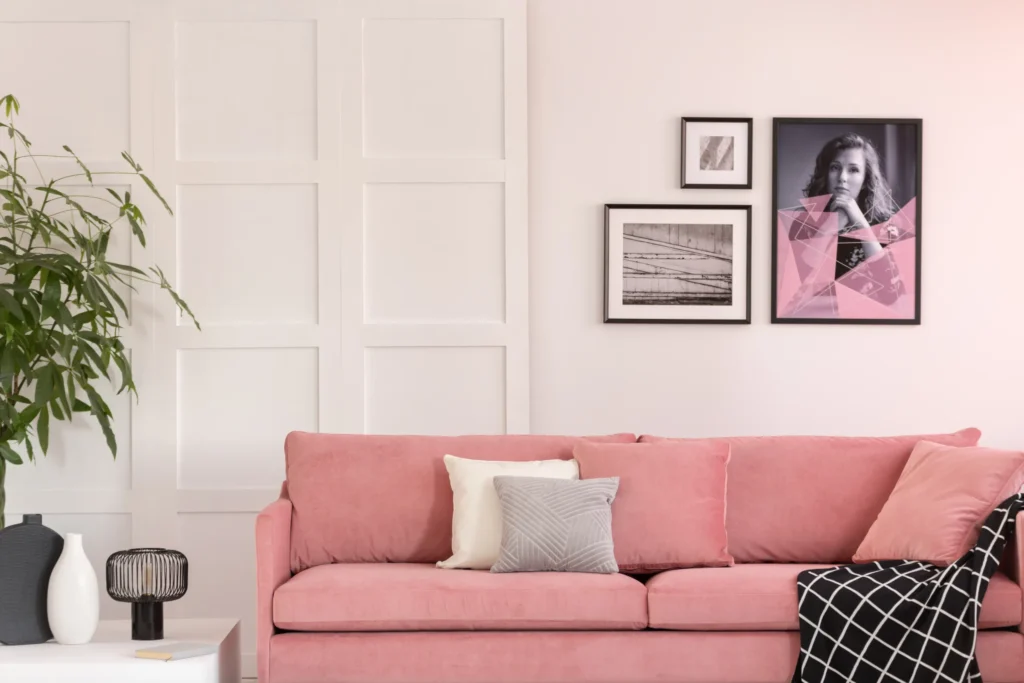
Play with Pastels:
Introduce pastel hues through wall colors, furniture upholstery, or accessories. Picture a living room adorned with a blush-colored sofa or a kitchen featuring mint-green cabinets.
Embrace Symmetry:
Create a sense of order by arranging furniture and décor items symmetrically. A symmetrical gallery wall or matching bedside tables can channel the structured elegance seen in Wes Anderson’s films.
Integrate Vintage Finds:
Scour thrift stores or antique markets for unique vintage pieces that exude character. A mid-century modern lamp or a retro-inspired coffee table can transport your space to the whimsical world of Wes Anderson.
Read Also: Calm In Chaos- Beachy Bare Bliss For The Modern Lifestyle 101
Spathrooms: Elevating Your Bathroom to a Tranquil Haven
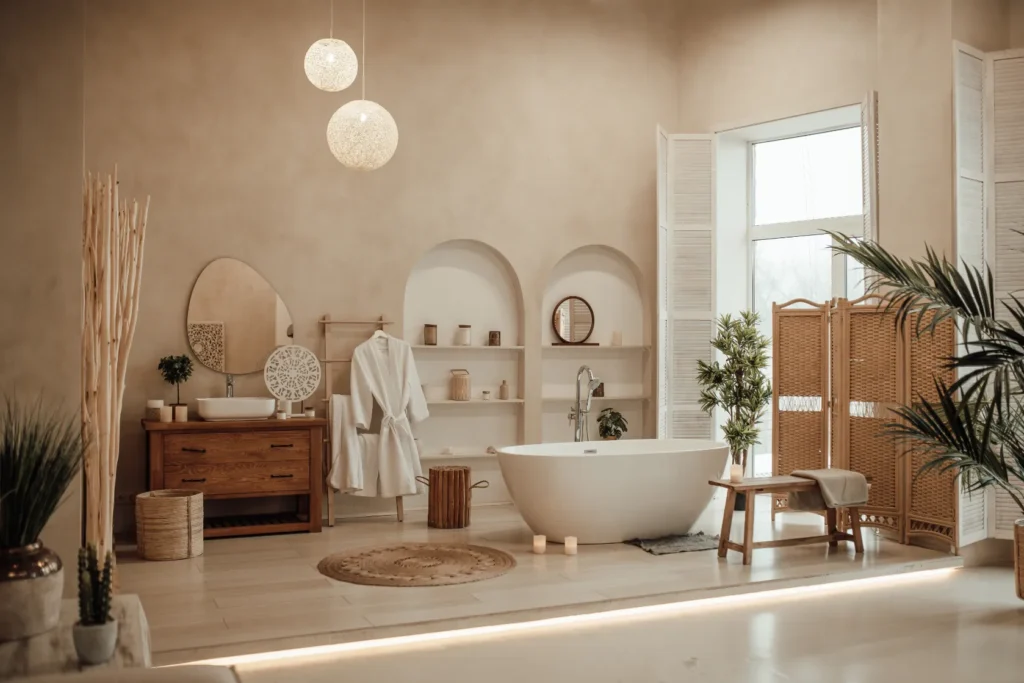
Introducing Spathrooms: Where Spa Meets Bathroom
Step into the future of bathroom design with the innovative concept of “Spathrooms.” A harmonious blend of spa-inspired tranquility and essential bathroom functionality, Spathrooms represent a growing trend in interior design. Gone are the days when bathrooms were merely utilitarian spaces; the Spathroom concept invites you to transform your bathroom into a sanctuary of relaxation and rejuvenation.
The Trend of Tranquil Spaces: Spa-Like Environments in Your Home
In the bustling world we live in, the trend of creating tranquil, spa-like environments within our homes is gaining momentum. Spathrooms offer a retreat from the daily hustle, allowing you to unwind and indulge in self-care without leaving the comfort of your home. The bathroom becomes more than just a functional space; it evolves into a serene oasis where you can escape the demands of the outside world.
Tips for Crafting Spathrooms: A Relaxing Retreat
Soothing Color Schemes:
Opt for calming color palettes reminiscent of spa retreats. Soft blues, muted greens, or gentle neutrals create a serene backdrop. Imagine a bathroom with pale blue walls or natural stone-inspired tiles, instantly evoking a spa-like atmosphere.
Incorporating Natural Elements:
Bring the outdoors in by integrating natural elements. Wooden accents, potted plants, or pebble flooring add an organic touch, connecting your Spathroom to the tranquility of nature. Picture a bathroom adorned with bamboo shelves or a wall adorned with cascading greenery.
Relaxing Lighting Choices:
Lighting plays a crucial role in setting the mood. Opt for soft, diffused lighting that mimics the gentle glow of candlelight. Consider installing dimmer switches or incorporating pendant lights for a subtle yet impactful illumination.
Examples of Serene Spathrooms
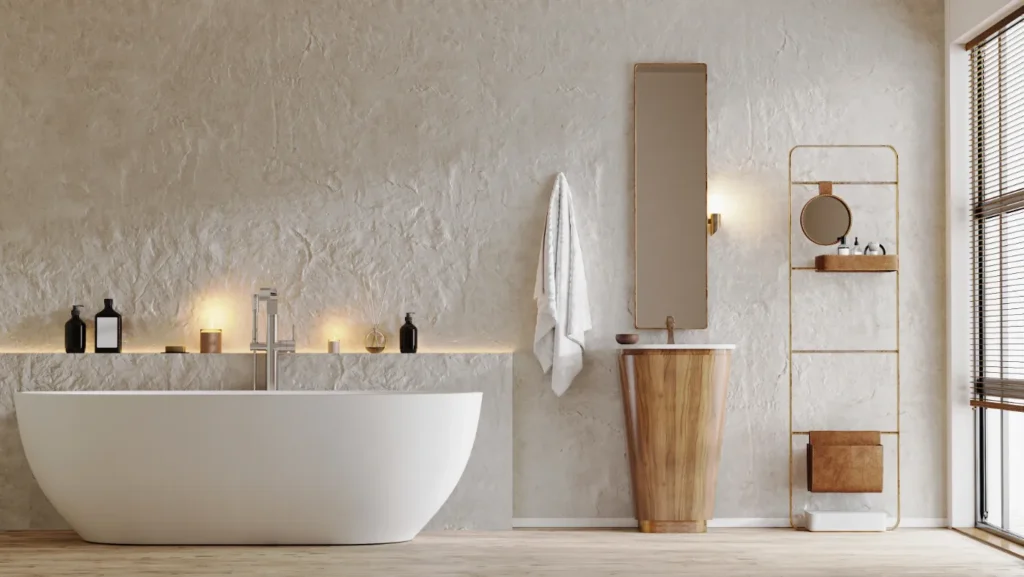
Visualize a bathroom with a neutral color palette, bamboo accessories, and a rainfall shower—a perfect embodiment of the Spathroom concept. Alternatively, picture a bathroom with a freestanding bathtub surrounded by greenery and soft, ambient lighting, creating a haven for relaxation.
In the realm of interior design, Spathrooms represent a shift towards creating holistic spaces that prioritize well-being and relaxation. By incorporating soothing color schemes, natural elements, and relaxing lighting, you can transform your bathroom into a sanctuary where every moment becomes an opportunity for rejuvenation. Welcome to the world of Spathrooms—where luxury and tranquility converge for the ultimate bathing experience.
Conclusion
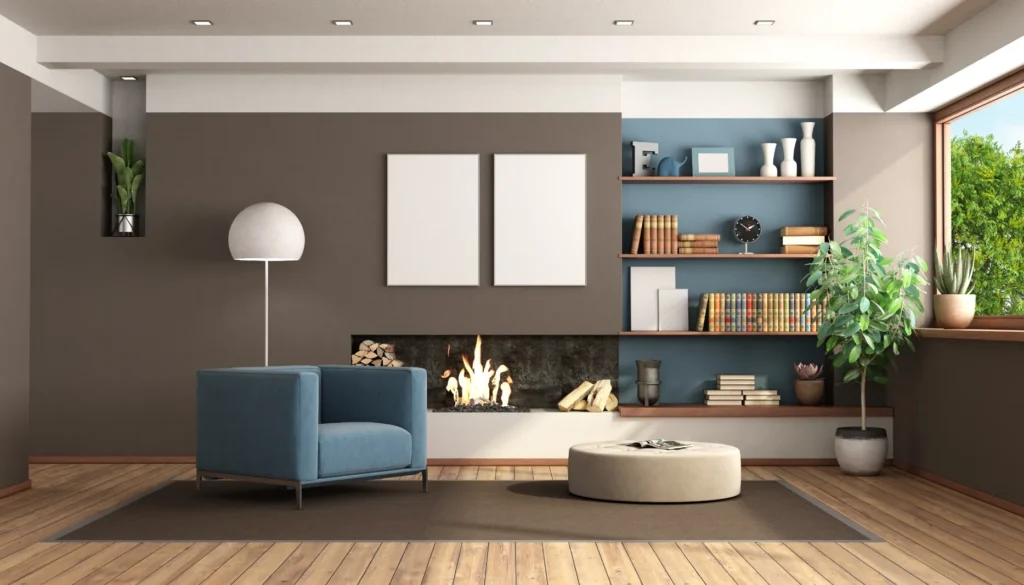
In our exploration of the anticipated interior design trends for 2024, we’ve traversed a diverse landscape of styles, each presenting a unique opportunity to mold and customize our living spaces. From the comforting tones of Peach Fuzz to the richness of metallic accents, the eclectic fusion of Mix and Match, the whimsical charm of Wes Anderson, and the serene allure of Spathrooms, these trends beckon us to infuse creativity and purpose into our surroundings.
It’s clear that these trends extend beyond surface-level aesthetics; they reflect a collective yearning for spaces that harmonize with our identities and elevate our daily experiences. Whether one gravitates towards the sophistication of metallic elements, the playful combinations of eclectic design, or the calming ambiance of a spa-inspired bathroom, the key lies in embracing trends that resonate with individual tastes.
The year 2024 invites us to be architects of our personal spaces, weaving a narrative that encapsulates who we are and what we hold dear. In the constantly changing landscape of interior design, remaining tuned in to and drawing inspiration from emerging trends goes beyond mere preference; it signifies a dedication to shaping spaces that elicit a sense of calm, spark creativity, and function as havens for the soul. As we step into the future of interior design, let your space be a canvas where trends harmonize with personal expression—a place where each room narrates the story of your uniqueness and style. Welcome to the transformative realm of interior design in 2024!
The White Frame is not just another interior design and build firm, we are proud to offer you professional service levels of global standards and deep respect for both contemporary and traditional interior design, Headquartered in Gurgaon, and extend our services across diverse cities, including Gurgaon, South Delhi, Delhi-NCR, North India, Mumbai, Chandigarh, Jaipur, and Agra.
Explore some of our work here.


